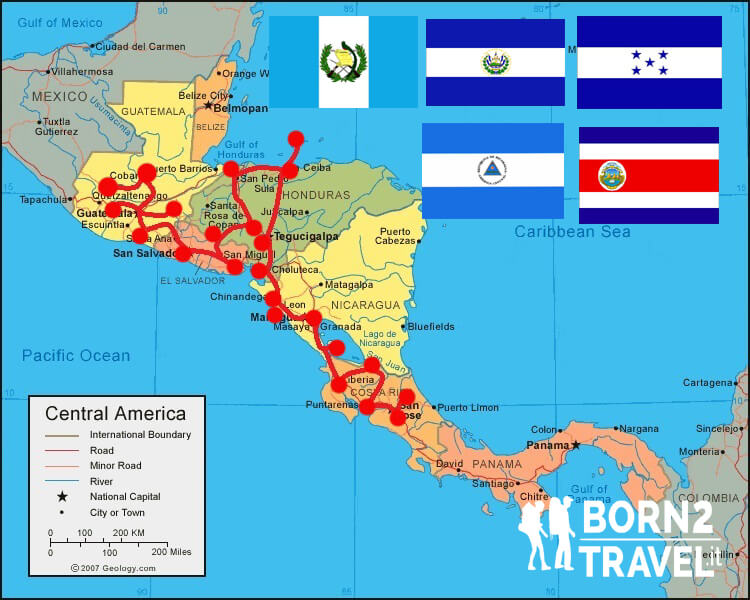
Best time to visit:
Year-round
Vaccines
Vaccinations: low risk of malaria, prophylaxis is recommended in low-altitude tropical areas.
In a word:
Compà (hi mate!)
Essential experiences:
Get lost in the colorful market of Chichicastenango, Guatemala; Take the Ruta de las flores to Auhachapan, El Salvador; Swimming in the crystal clear waters of the island of Roatan, Honduras; Climb one of the magnificent three volcanoes of the island of Ometepe, Nicaragua; Watch the deposition of sea turtles in Playa Tamarindo, Costa Rica
In this wonderful adventure we focused on some Central American states; slowly, on the road, using hundreds of colorful local buses and vans, we traveled the long stretch of land that connects the two Americas.
We started from Guatemala after falling in love with its ancient Mayan culture, its traditional clothes, its markets and its religious people, we crossed the small El Salvador hitchhiking stopping in the most suggestive towns; we then continued south through the infamous Honduras with its Mayan sites and tropical islands; we fell in love with Nicaragua with its colonial cities, its volcanoes, its people of the "revolucion" up to the very modern Costa Rica, with its beaches, its national parks and its lush nature! We only skipped Belize and Panama, having endorsed them on previous trips!
Our suggested itinerary (2 months) | |
one week: | Guatemala City, Antigua, Chichicastenango, Panajachel, Lago Atitlan (Guatemala) |
one week: | Auachapan, Santa Ana, Suchitoto (El Salvador) |
two weeks: | Copan Ruinas, Roatan, Tegucigalpa (Honduras) |
two weeks: | Leon, Granada, Isla de Ometepe (Nicaragua) |
| two weeks: | Playa Tamarindo, La Fortuna/Arenal, Manuel Antonio NP, San Josè |
We land in the capital: Guatemala City after many hours of flight. Many views remind us a little of the Philippine town of Cebu. The very kind Claudia, one of our couchsurfing contacts, accompanies us by car to Antigua and, along the way, I meet a small family who, sitting in a circle, prays in a park; women with colorful clothes smile at me; pitch-eyed girls with big eyes play hiding under the clothes of their mothers. What a feeling of peace!
Unfortunately, when we arrived in Antigua, we discovered that the lords of the "Hotel Dionisio" did not keep our reservation and we met on the first January evening, after 14 hours of flight without a hotel!
We like unexpected events! After 2 hours of research, dead tired, we find a very Spartan hotel and shortly thereafter immediately around with Claudia among craft markets, colonial streets and Christmas air!
Antigua ... with its colonial cobblestone alleys and pastel-colored walls ... This city on the slopes of three volcanoes (Agua, Fuego and Acatenango) was the capital of Guatemala until 1773 when it was razed to the ground by a devastating earthquake .
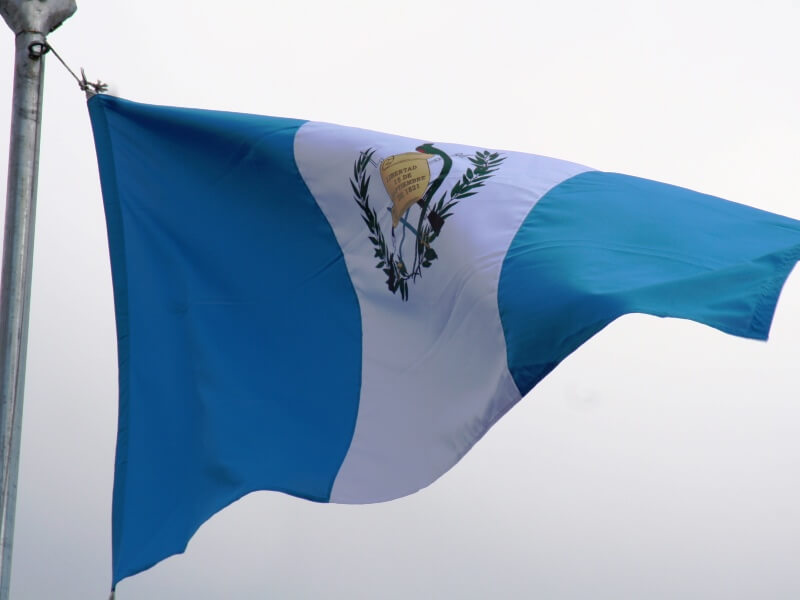
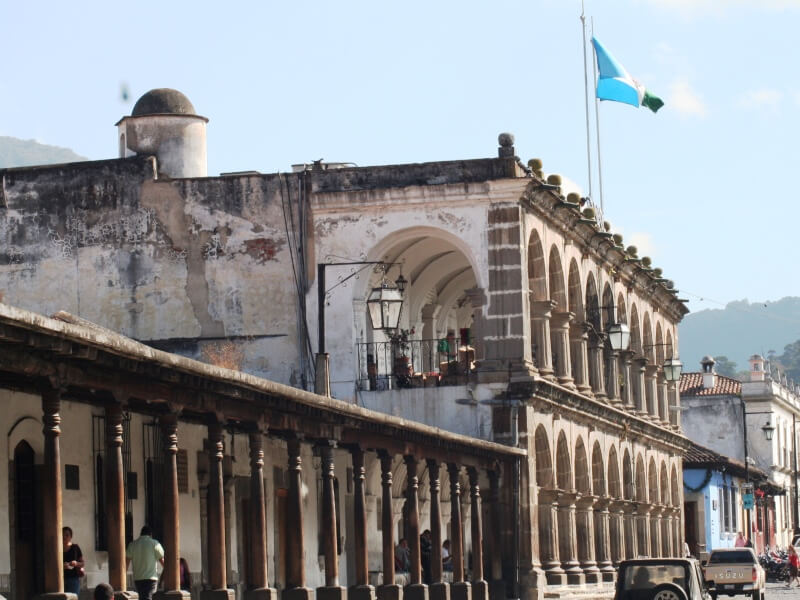
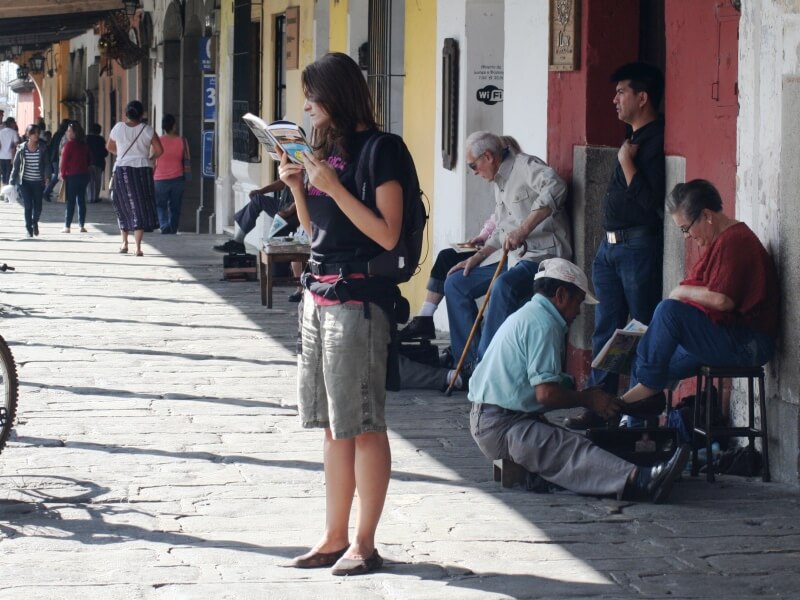
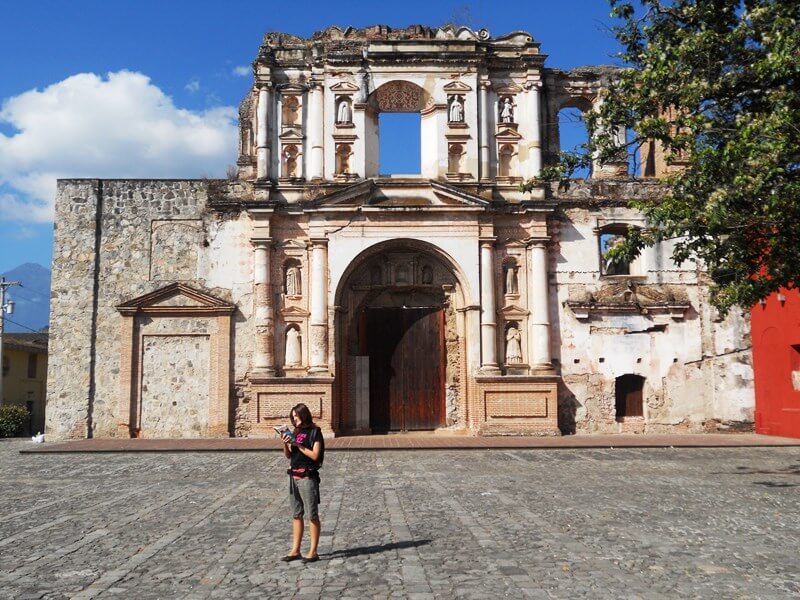
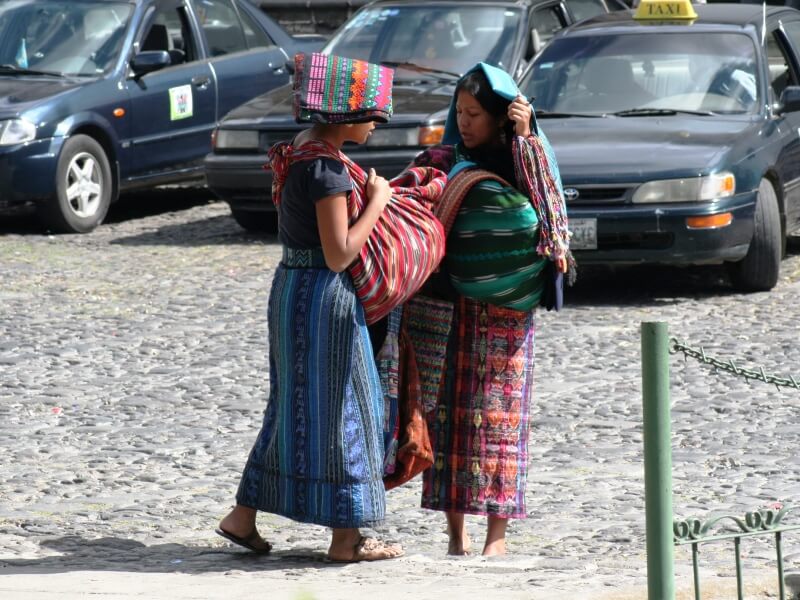
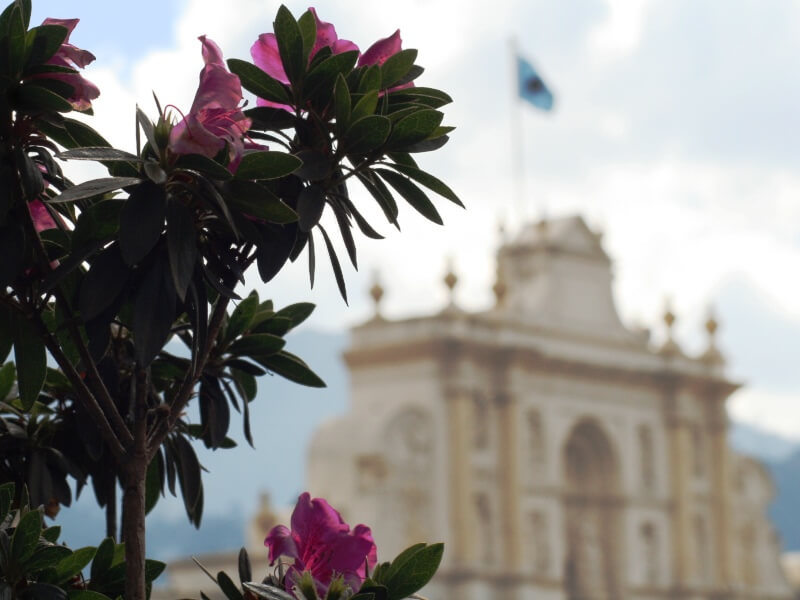
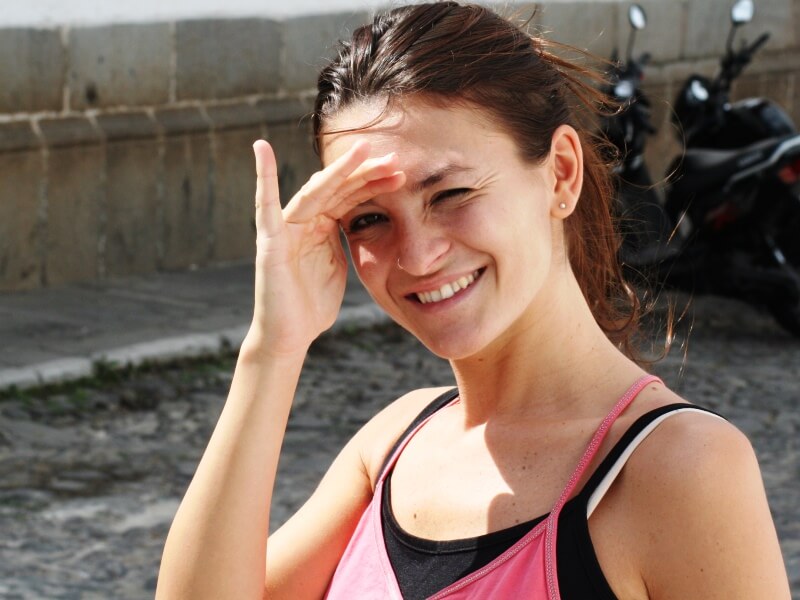
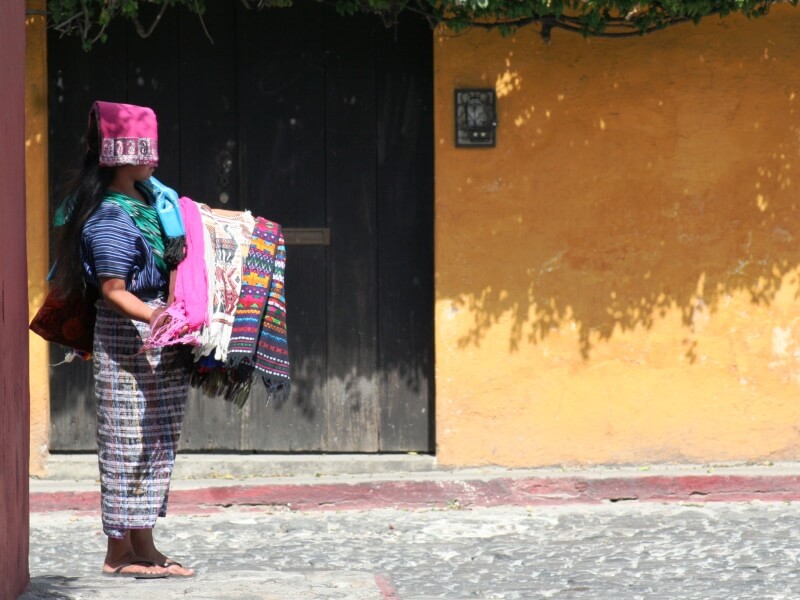
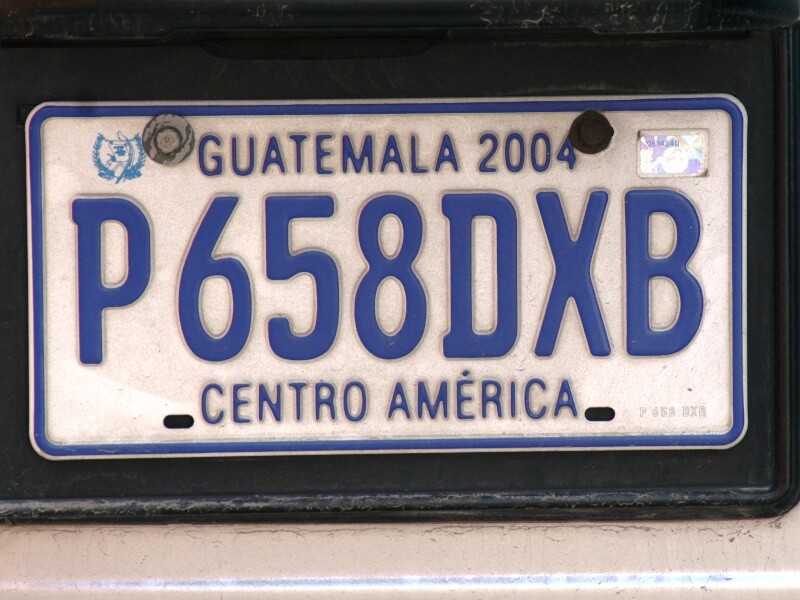
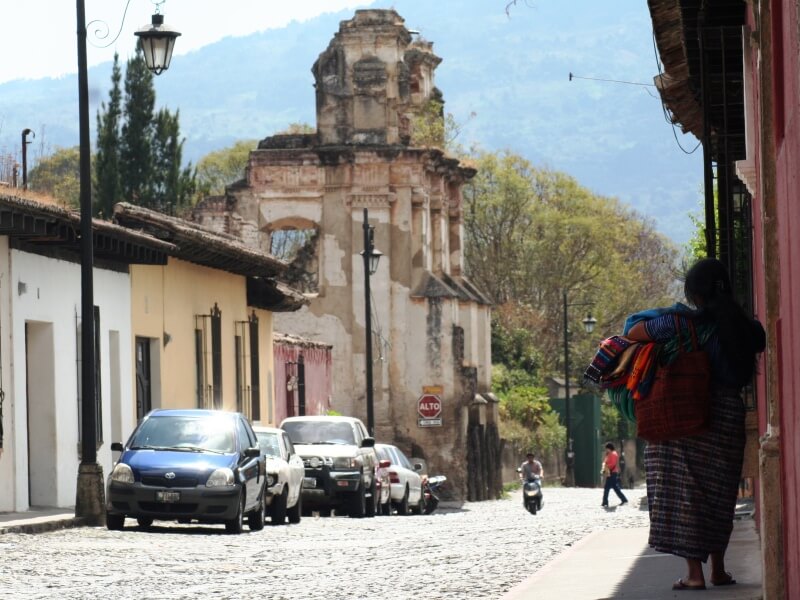
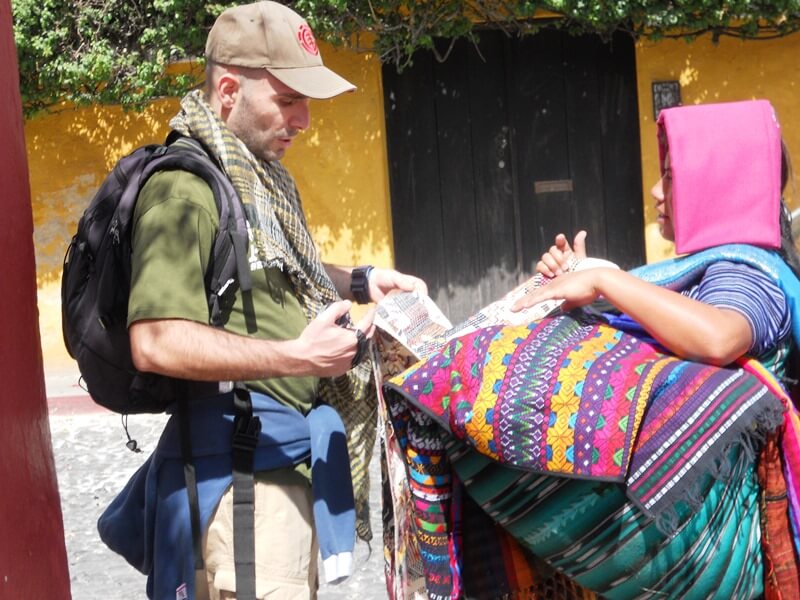
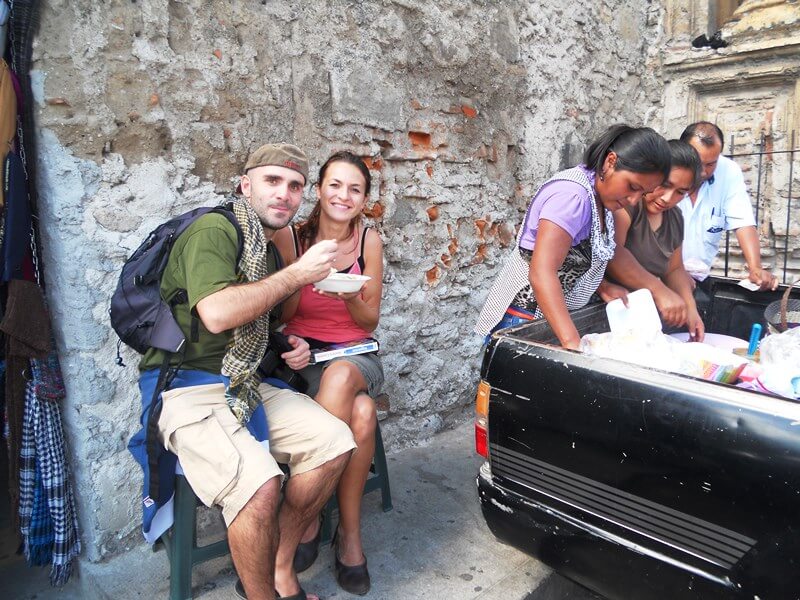
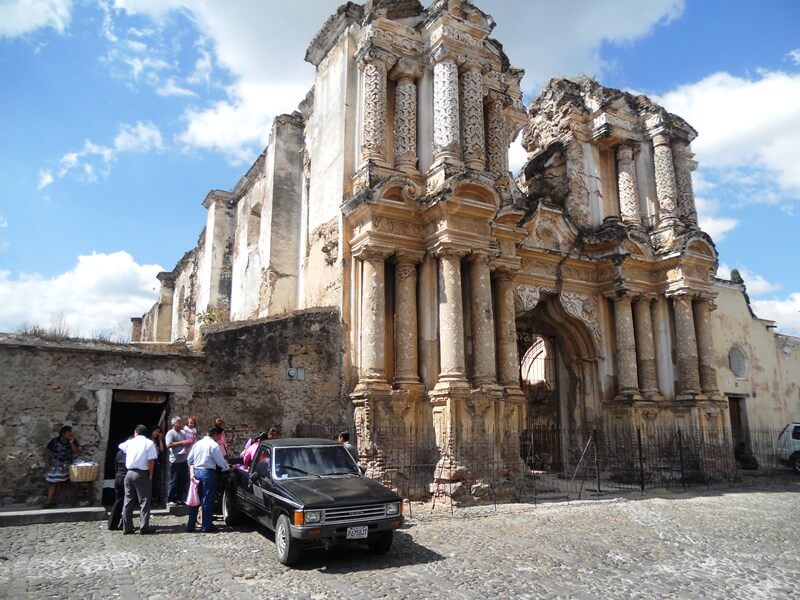
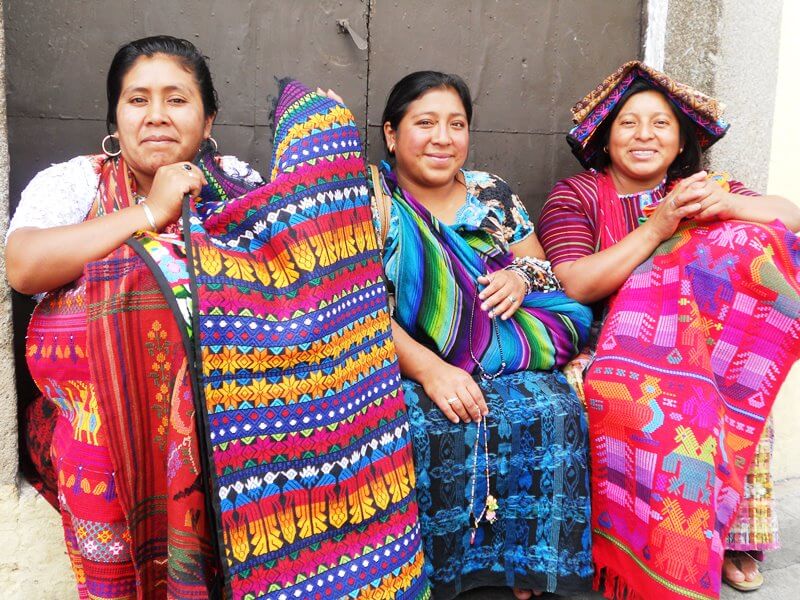
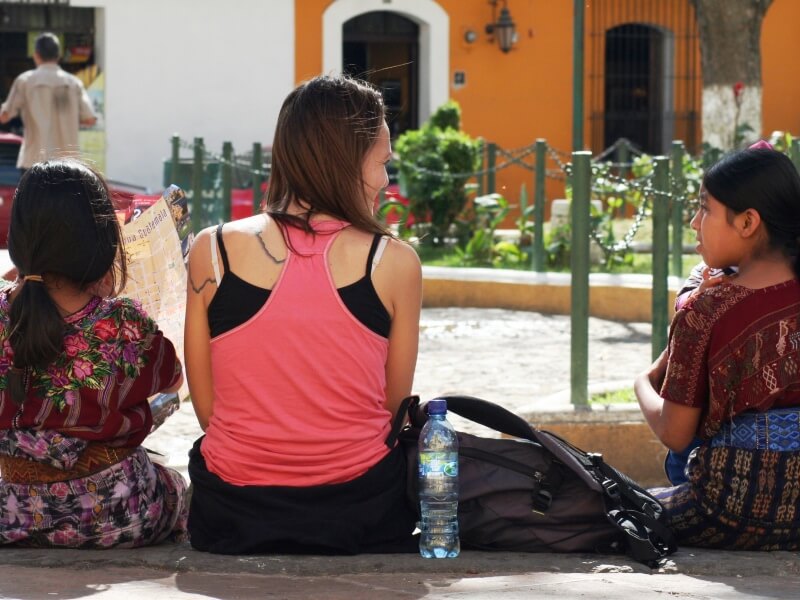
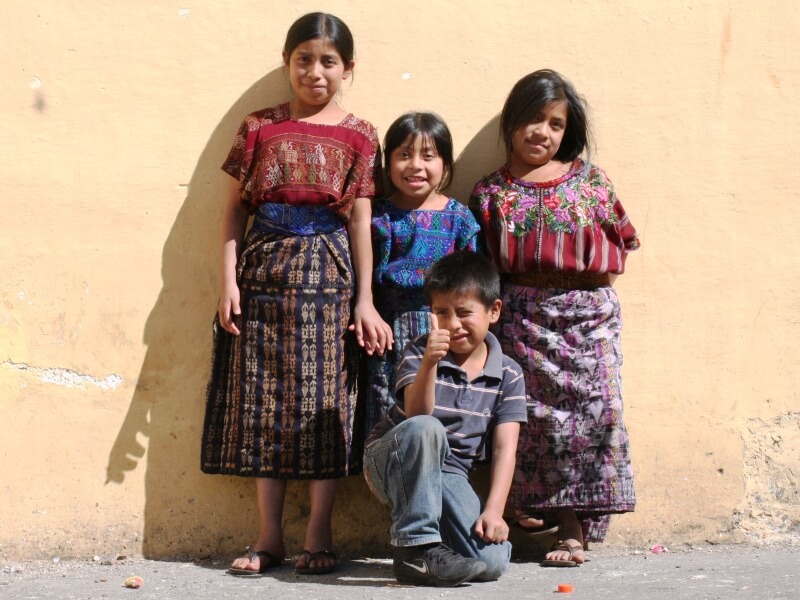
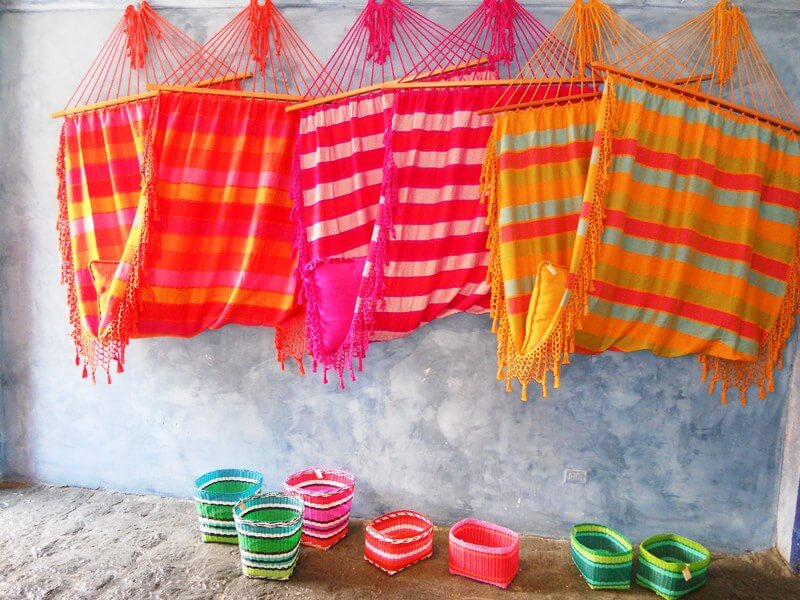
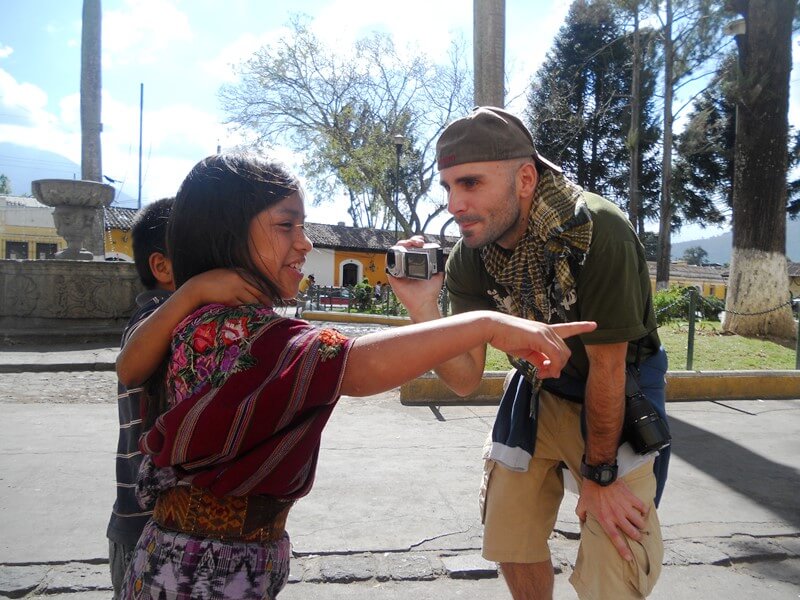
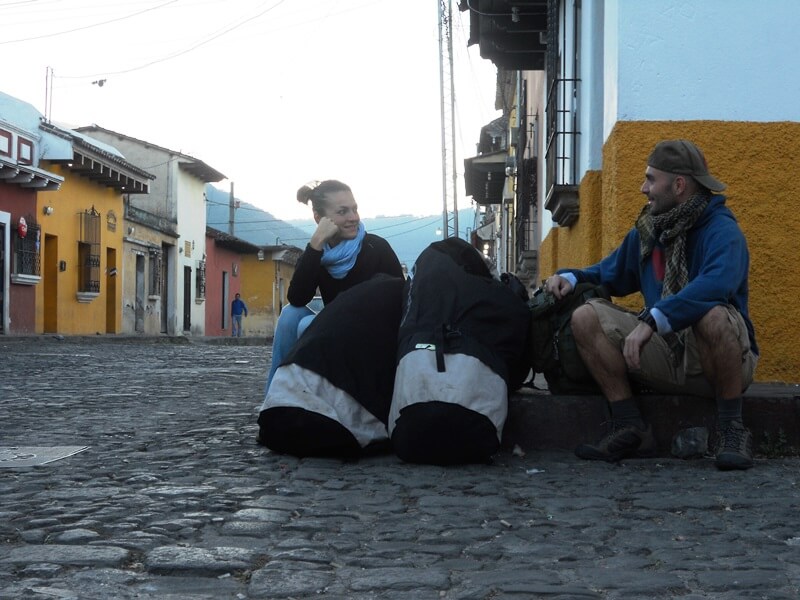
Chichi, as the locals call it, has really kidnapped us!
Its colors, its noises, its people, its history, the magical air that you breathe while you sit on the steps of St. Thomas and watch the "quiches" recite religious rituals by burning copal resin or while stroll among the colored tombs of the “Cemeterio General”.
Women with multicolored dresses and long raven hair crowd the streets selling everything and we enchant ourselves to admire the everyday life that flows before our eyes like a passionate documentary.
"Pana", as it is called by the locals, is a quiet town on the shores of Lake Atitlàn, today we are leaving to discover its "puebli".
San Juan la Laguna.
Small village of textile craftsmen; we wander aimlessly by sneaking inwardly, being enchanted by the peace that you breathe everywhere.
After twenty minutes of sailing we are in San Pedro la Laguna.
A long but pleasant climb leads us to the center of the small pueblo. Colorful fruit and vegetable markets, stalls of used clothes sell to nostalgic hippies.
Santiago de Atitlàn. Inside the cathedral, about thirty women kneeling in front of the altar recite the rosary between prayers and suggestive songs.
Following the Lonely Planet we start looking for "Maximòn", a puppet, the result of old Mayan beliefs, very revered here. Excellent excuse to sneak into the most secret alleys of this small town.
It is already time to go. After a Lucullian pancake breakfast prepared by our couchsurfing friend Sandra, we leave for the infamous Guatemala City, from there it will be an adventure to Ahuachapan.
For a long series of combinations we find ourselves on board an old taxi with Ricoberto and his wife Liliana who for 100 dollars (never paid so much!) Take us through a thousand adventures to the border with El Salvador. From there we will invent something!
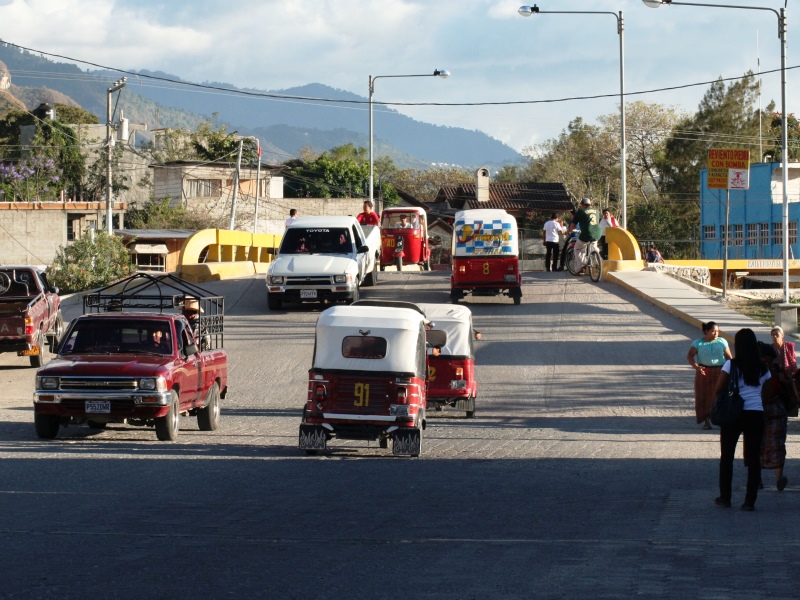
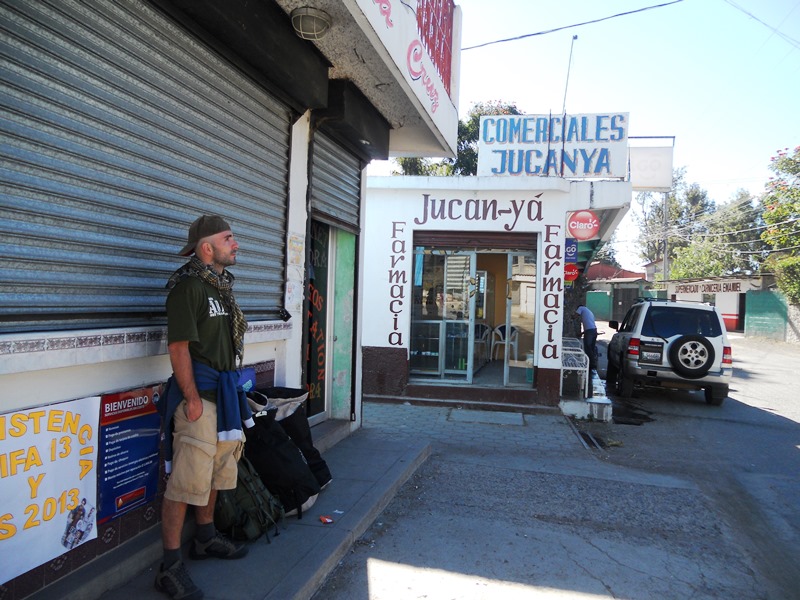
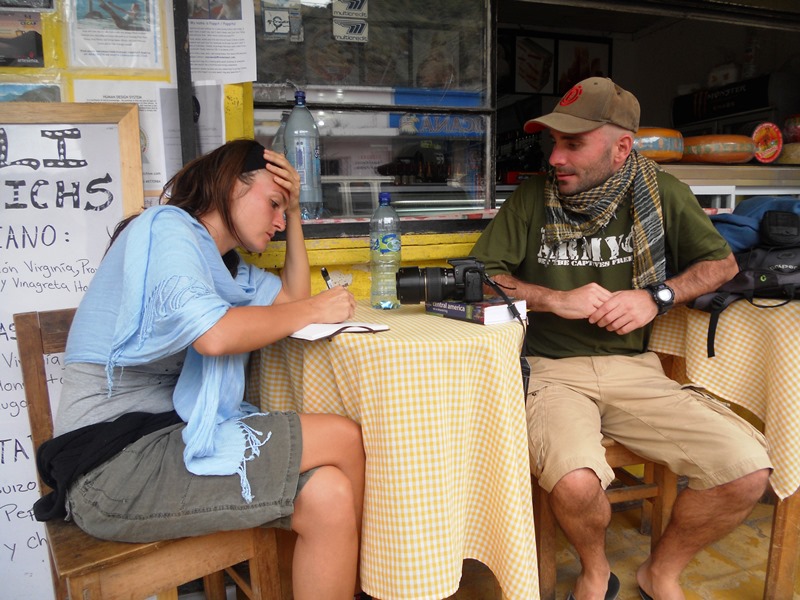
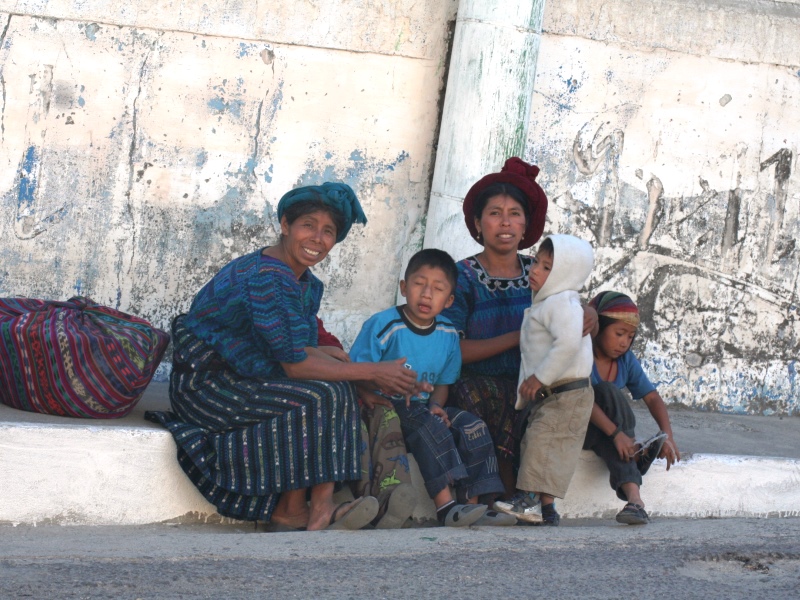
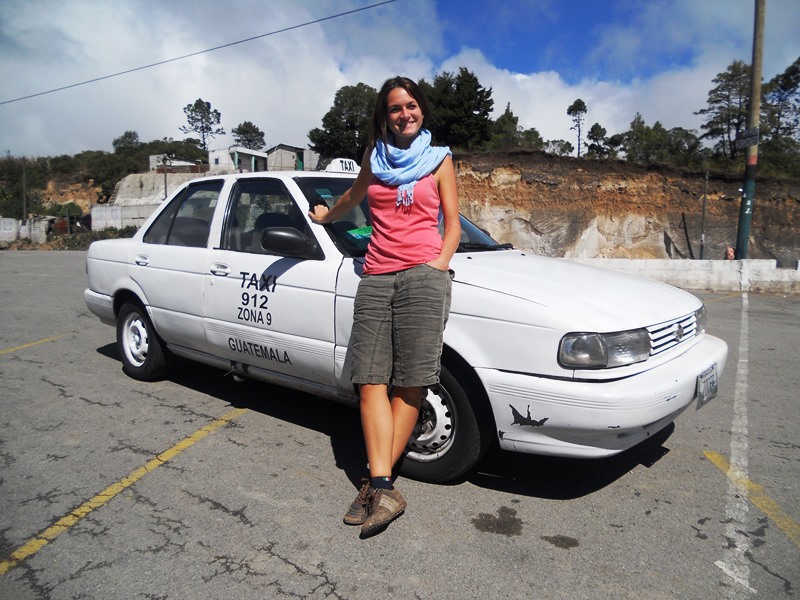
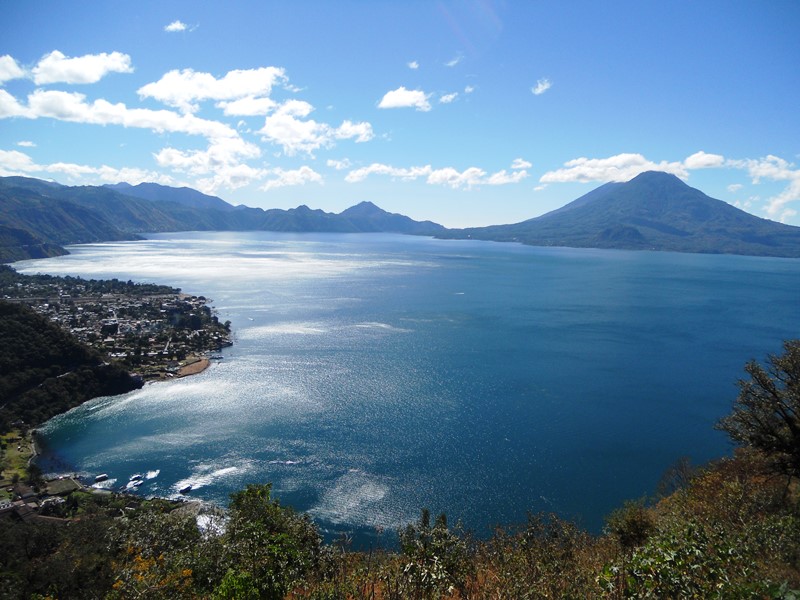
The 120 km that separate the dangerous Guatemalan capital from the border of Villa Nueva are quite stormy ... First we stop in a row because they are redoing the road surface and here, when it happens, the local ANAS resolves the disservice by simply closing for two hours both senses of gear! Suffocating heat and various concerns since at 17.00 the border closes and from then on it's all unknown!
Finally we start again but shortly after we hear a whistle coming from outside ... Ricoberto slows down, then the four arrows ... it's how we fear ... we punctured ... We go down immediately (luckily he had a spare wheel ... never seen such a smooth wheel ...) and we put ourselves at he also works because a pick up with three uneasy men who watch us like sharks also stops with us ... Liliana is already trembling with fear ... and thank goodness she lives in the most dangerous area of Guatemala City.
Here is the border in the distance. The two leave us because they cannot continue further and, among many recommendations, we greet them as we are attacked by a thousand junk dealers, taxi drivers and various scoundrels.
But a guardian angel comes to our aid: Daniel, a Spanish missionary who has lived in Central America for 15 years and who helps us to reach our final destination in El Salvador. We are exhausted!
The first taste shows us a totally different country from the one just left behind. Traditional clothes are gone, the color of the skin is lighter, there is no own currency (there is the American dollar), only the Spanish language shares it.
We have a coffee in a typical little bar in Plaza Concordia, warmed by the first rays of the sun and, from Ahuachapan, the starting point of the "Ruta de las Flores", we begin our exploration of the small villages in the area.
We climb on the fly and climbing in mountain roads we arrive in Ataco, an old colonial village that maintains, however, a strong indigenous identity.
We find ourselves in the open space of a church during a performance for the Epiphany with dances, songs and masks typical of the Salvadoran tradition.
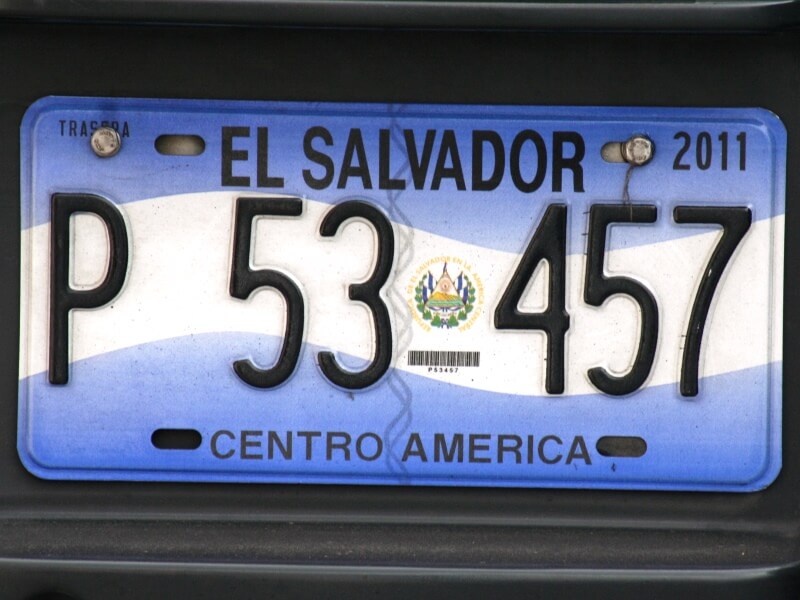
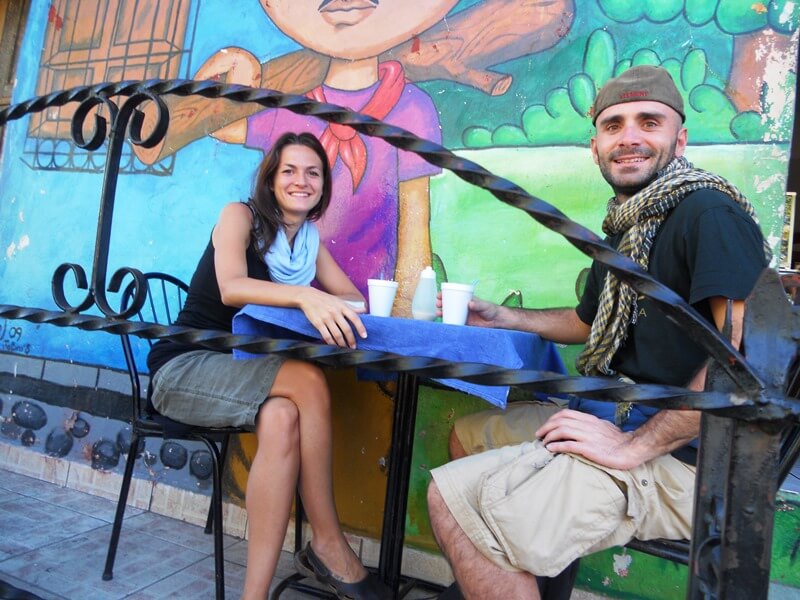
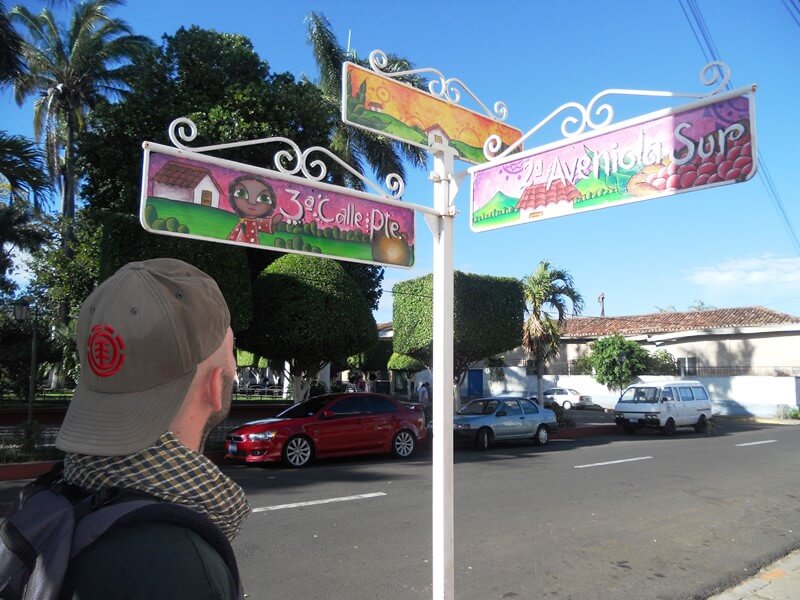
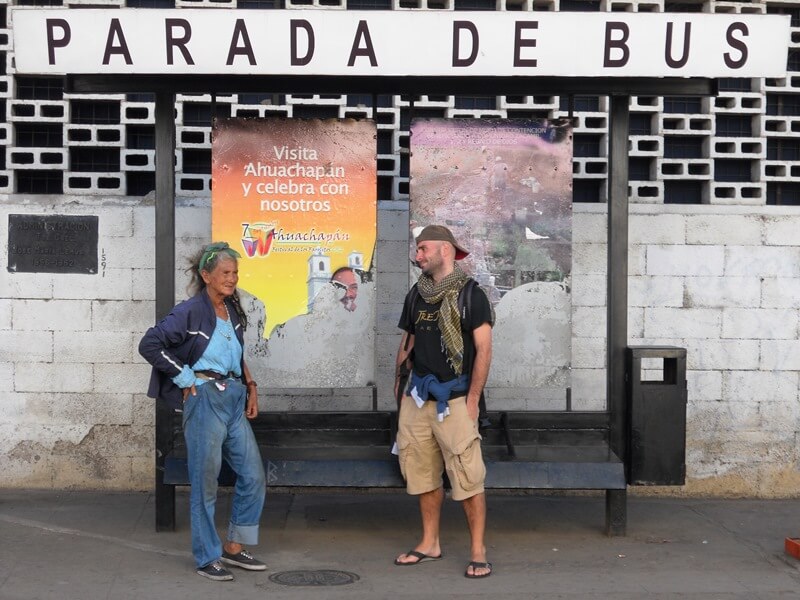
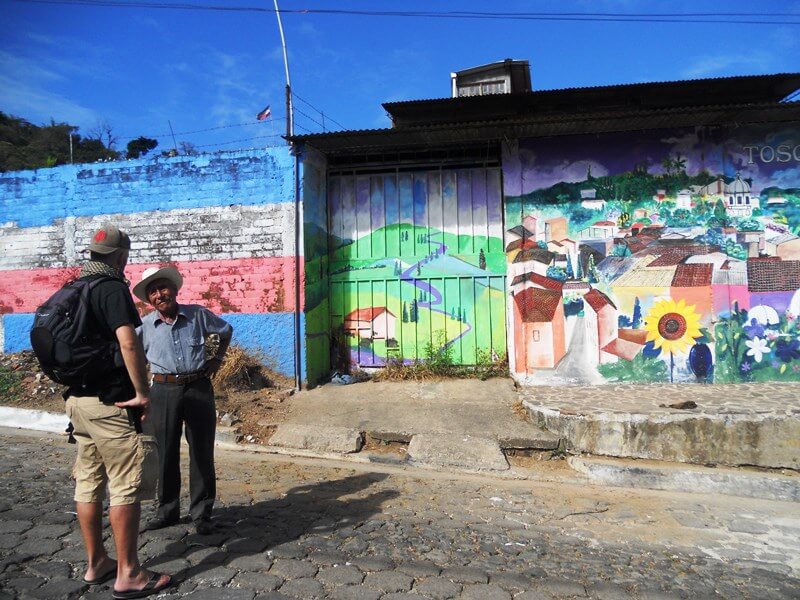
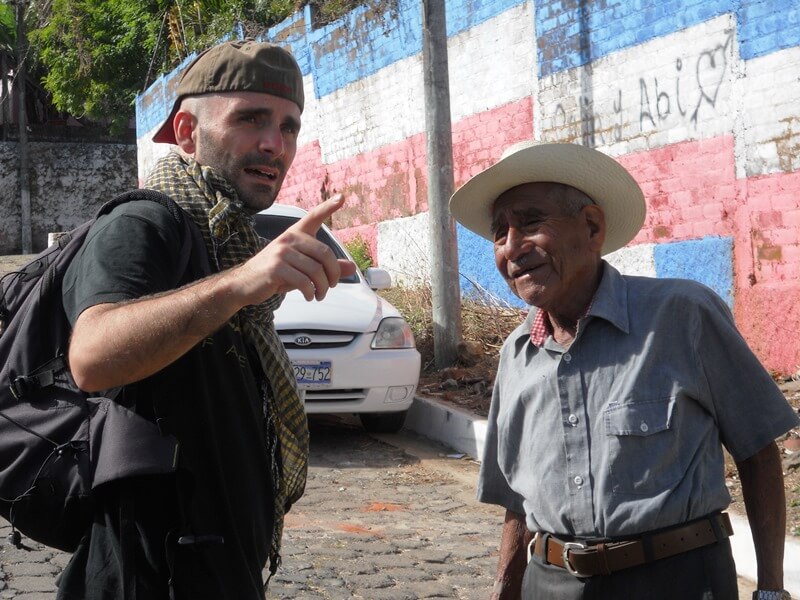
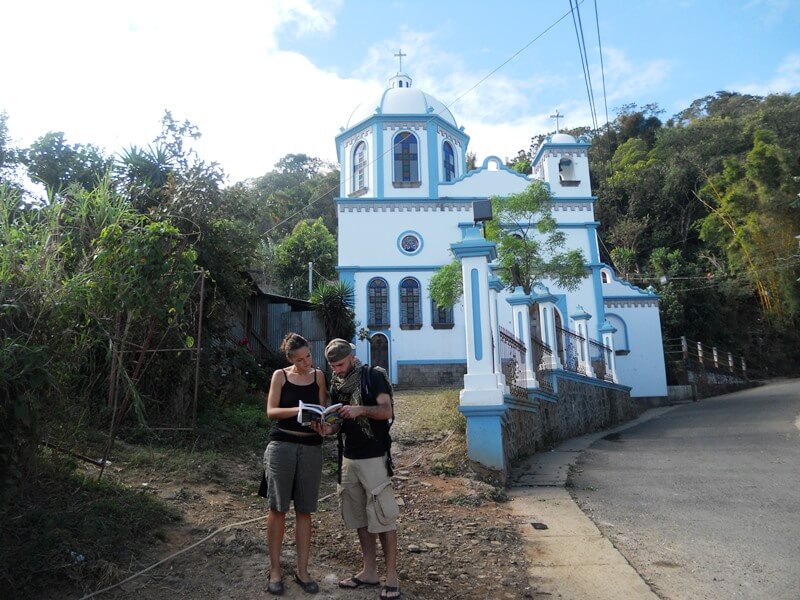
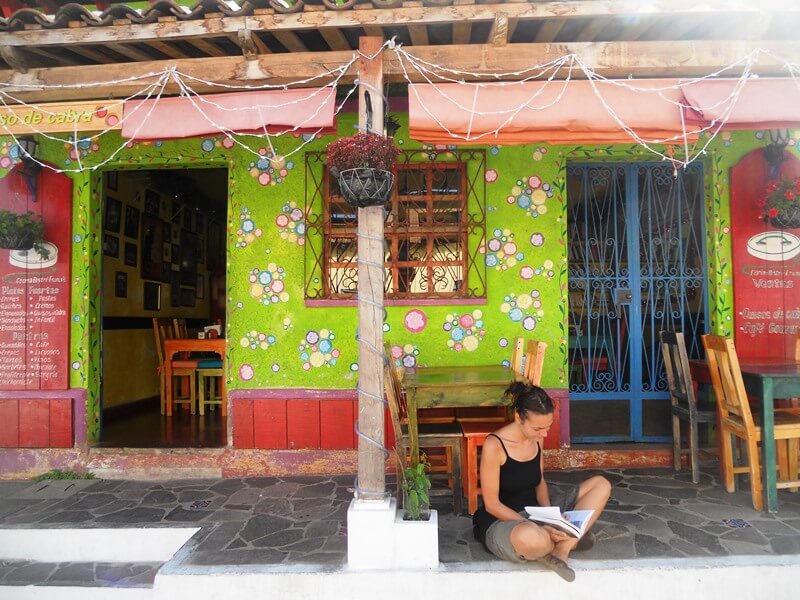
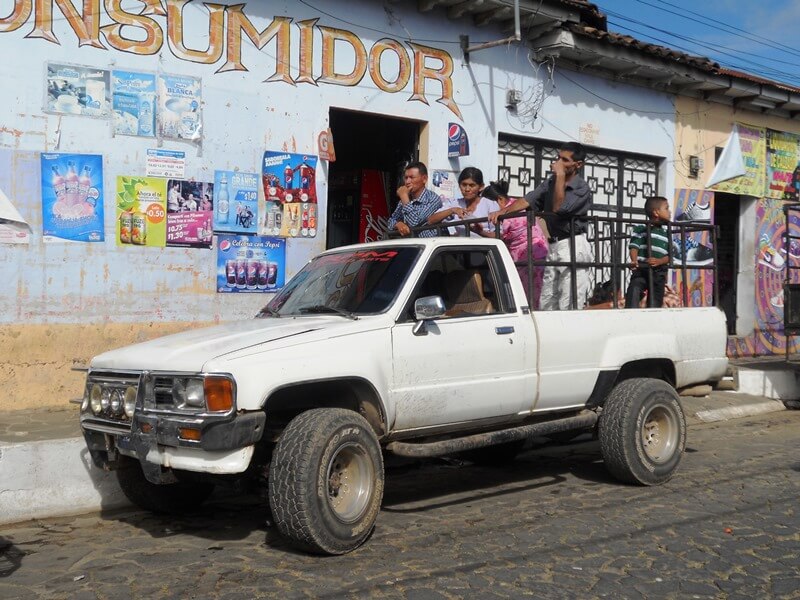
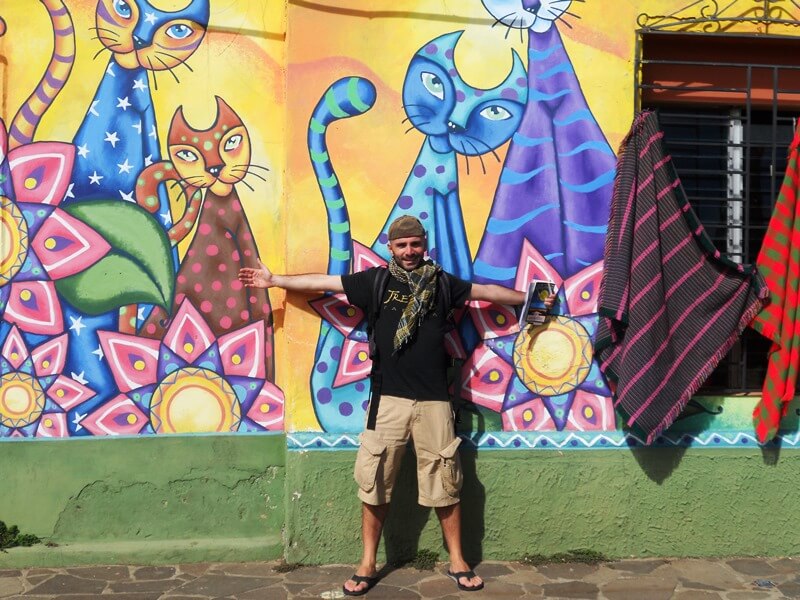
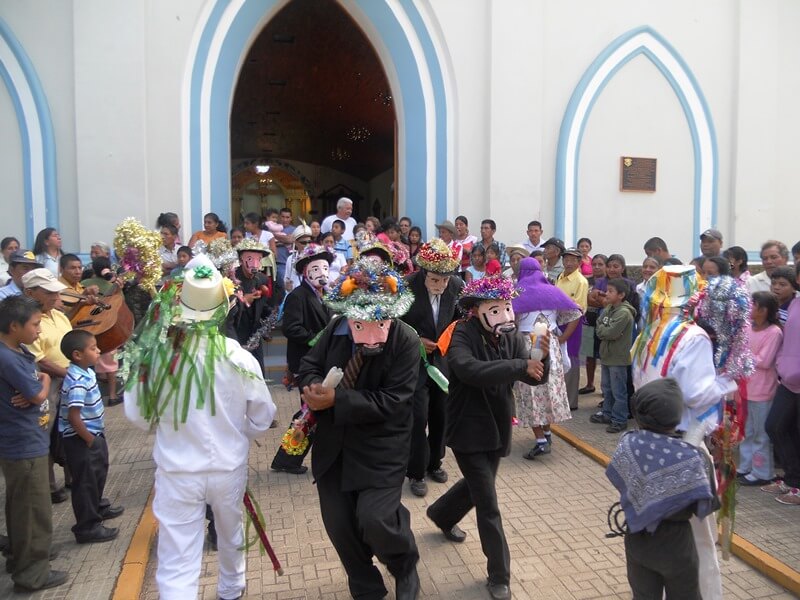
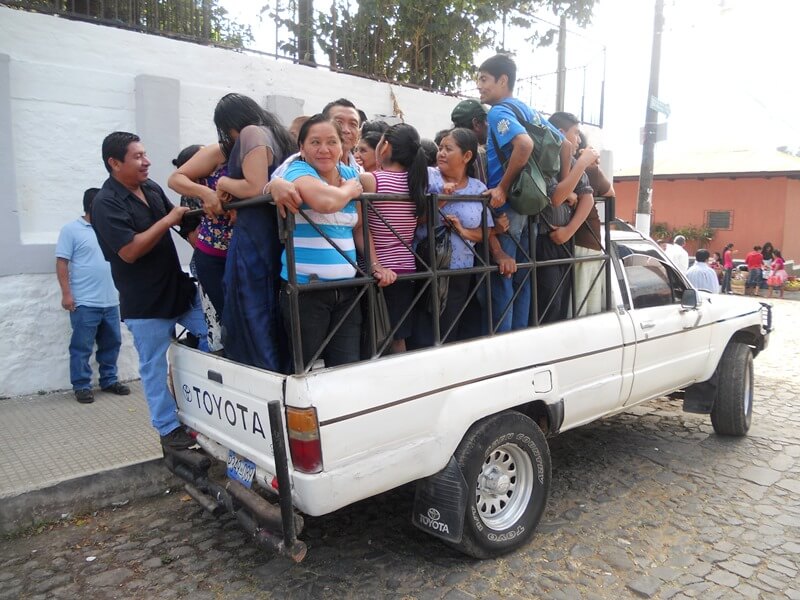
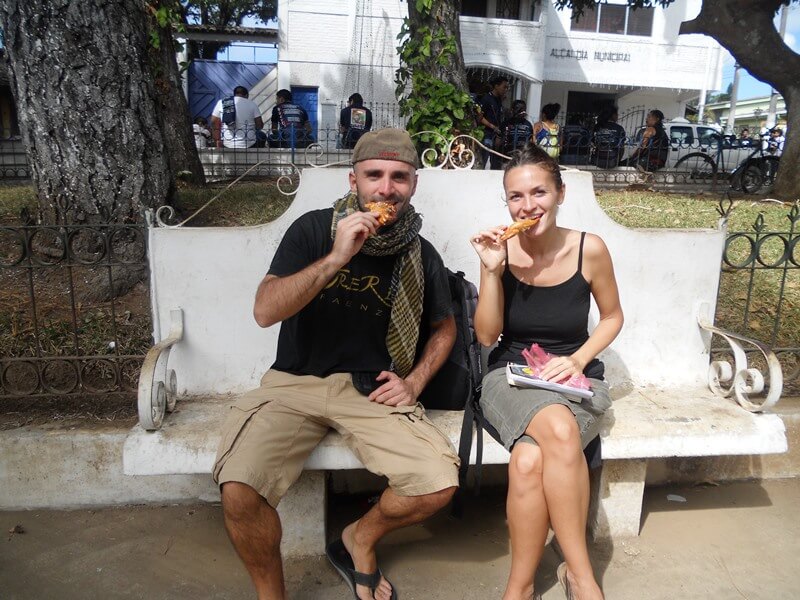
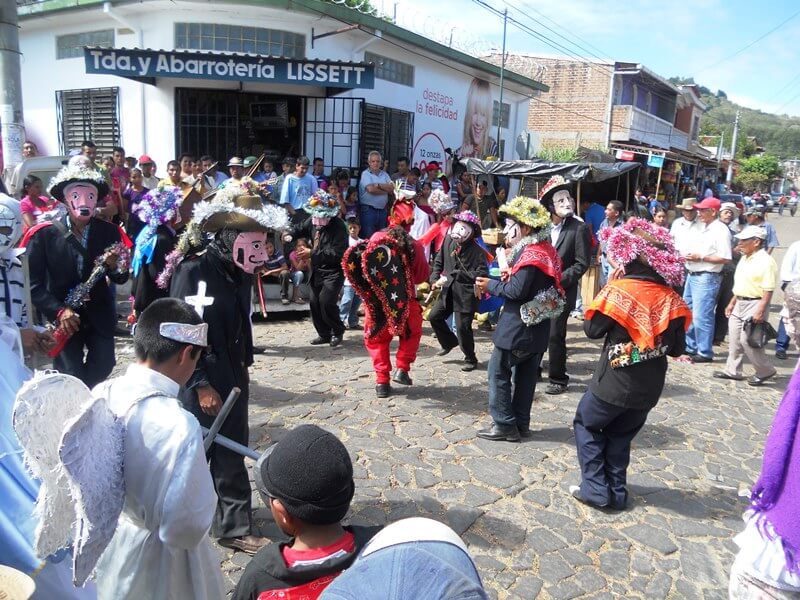
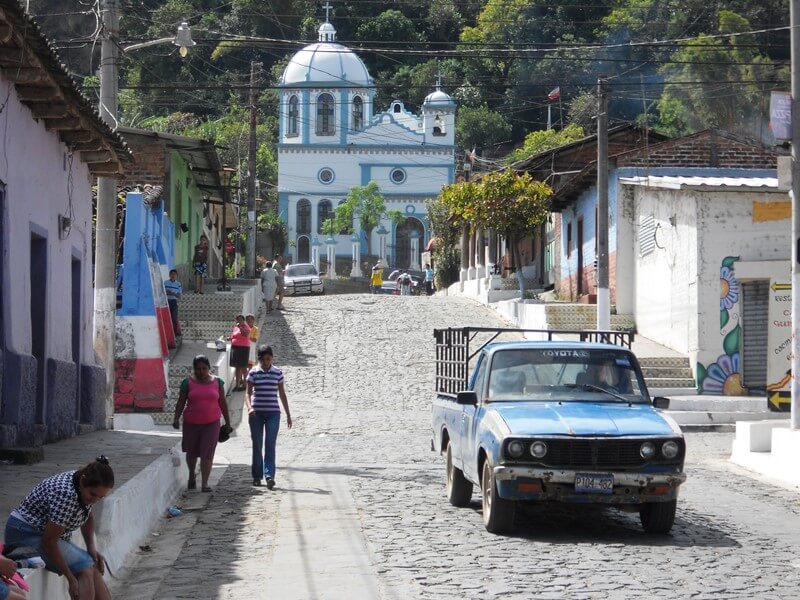
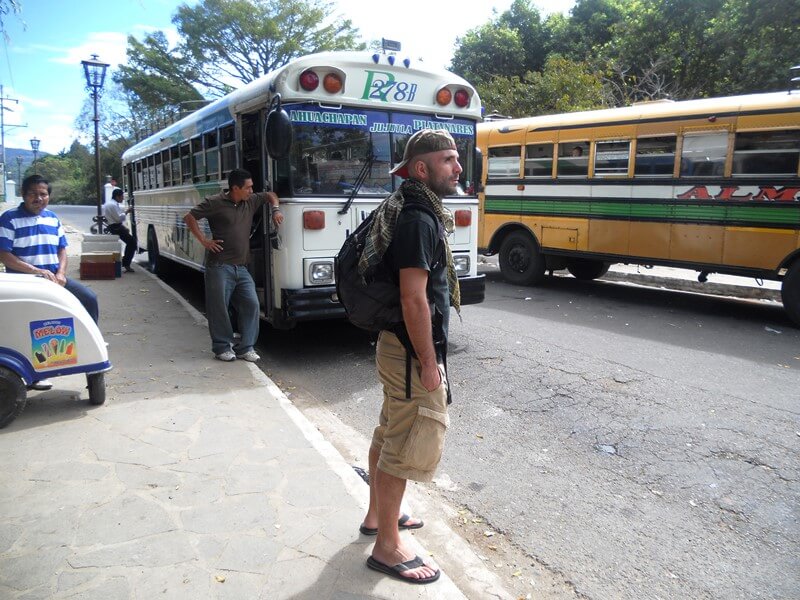
On the bus to Juayuà we admire the "Ruta de las Flores", the winding 36 km long road characterized by coffee plantations and of course greenhouses of colorful and lively flowers.
In the shadow of the majestic church of 1500 with the "Cristo Negro", we get lost among the stalls of the great gastronomic fair held every weekend and we taste many local specialties, from the yuca (a sweet potato) to the pieces of pumpkin with the honey!
Santa Ana, the second largest city in El Salvador after the capital.
The historic center is embellished with a beautiful white Gothic-style cathedral, an elegant theater and an ancient colonial building that now houses the Town Hall.
We are guests of a couchsurfer, a nice medical student named Roberto who takes us out of town to Lake Coatepeque, a romantic lake created millions of years ago inside the crater of a large volcano. We spend a few hours in complete relaxation chatting and admiring it from the top of a "mirador”.
In the evening Cecilia, his girlfriend, joins us to taste the best "pupusas" of Central America.
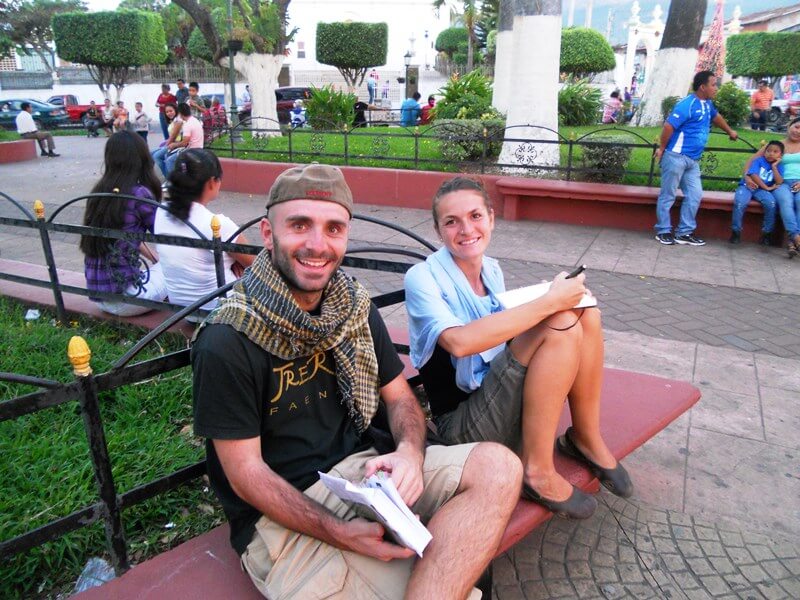
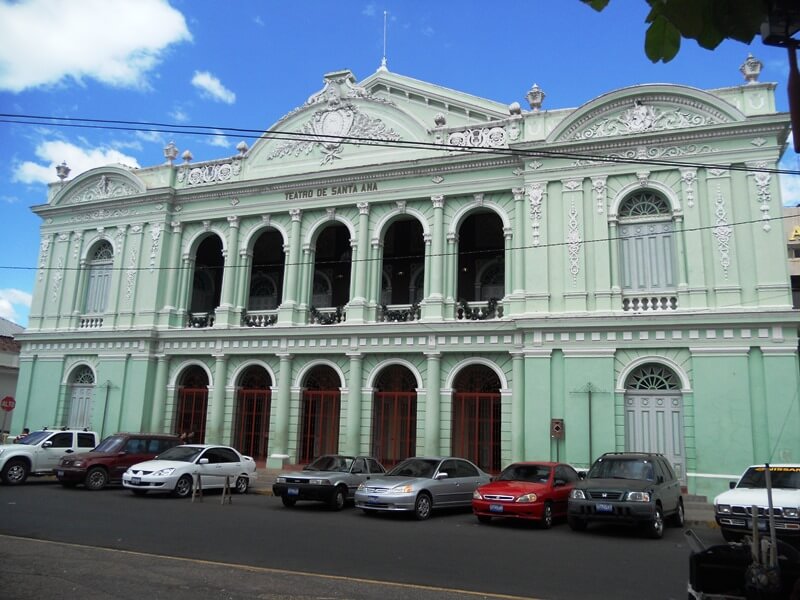
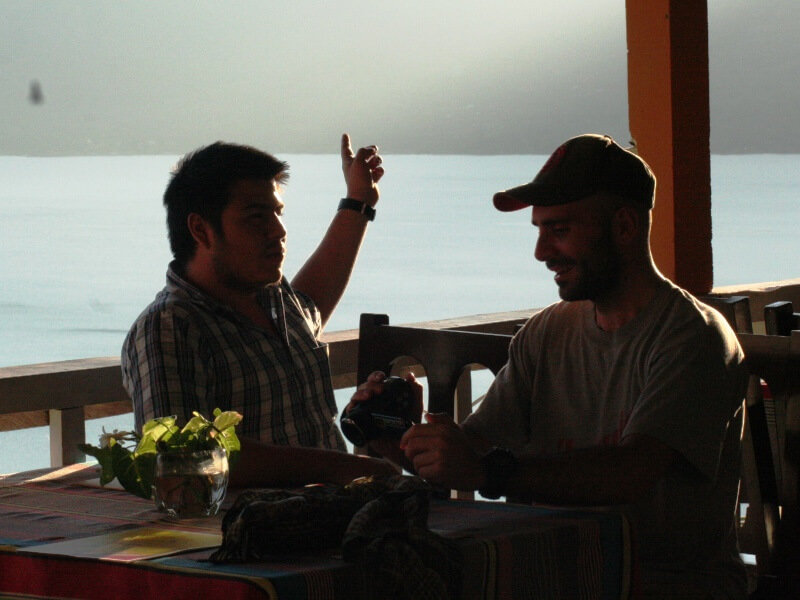
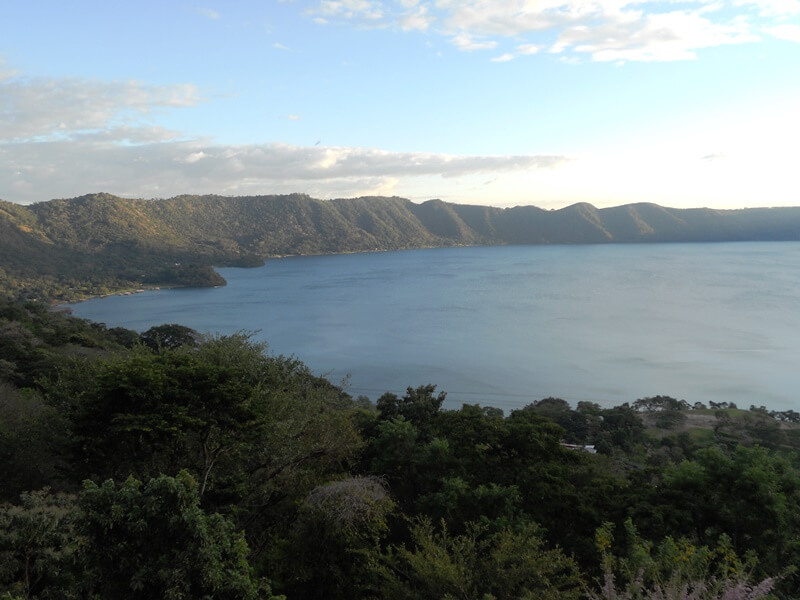
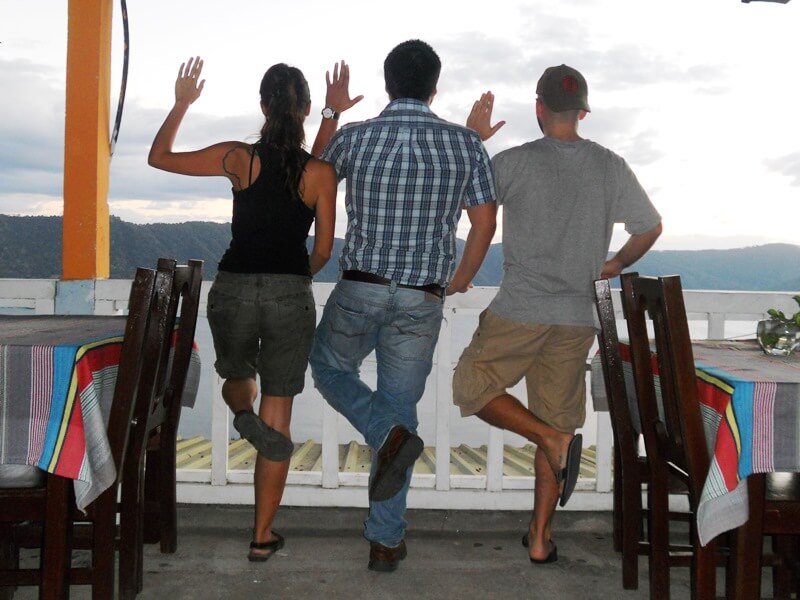
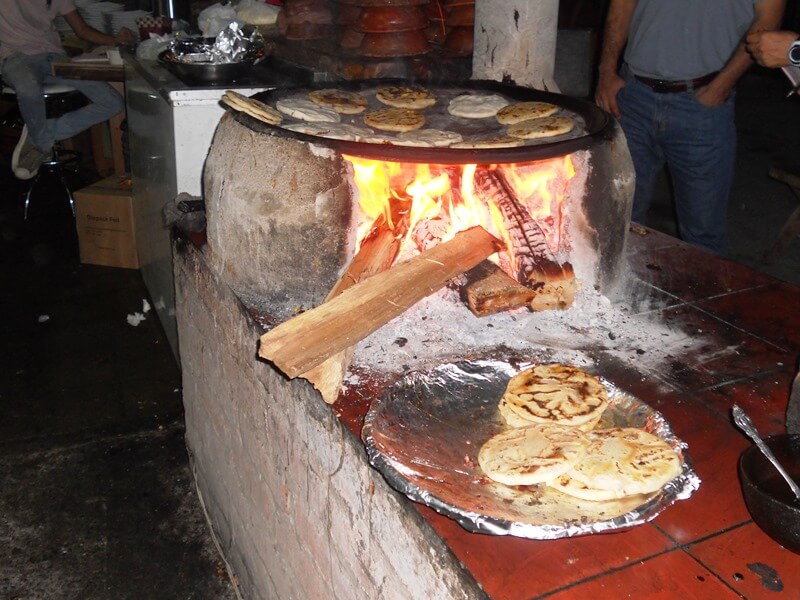
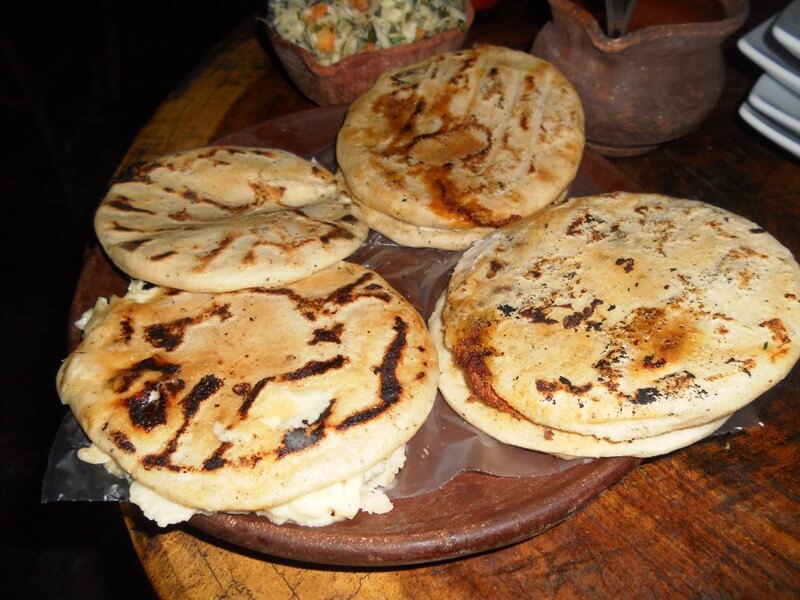
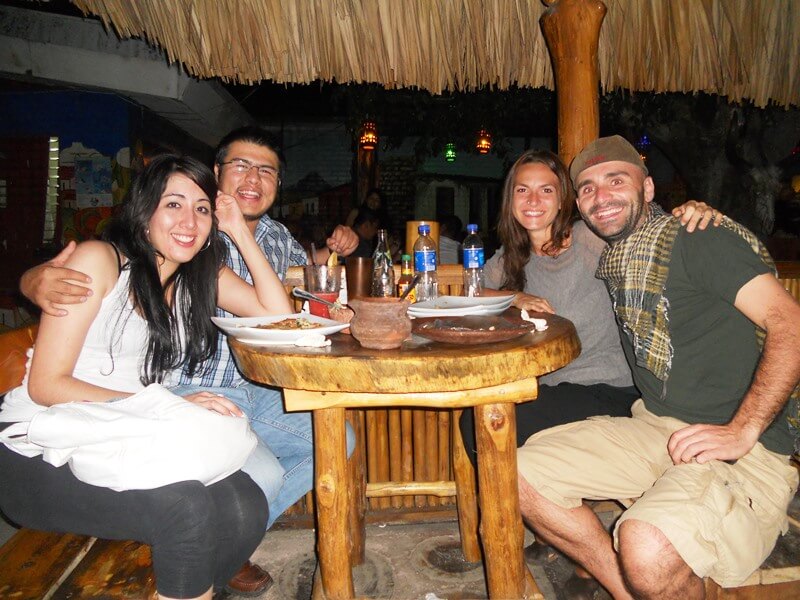
We reach the infamous San Salvador with a passage; we only have a brief glimpse of this city since our goal is the "Terminal d’Oriente" from where we will leave for the peaceful Suchitoto by chicken bus.
San Salvador appears very dirty, chaotic, abandoned to itself. As we walked through its streets, Roberto, our couchsurfing contact, told us of the times of the "guerrilla", of the 2001 earthquake, of Hurricane Mitch ... how many this small and tormented nation had to go through.
The chicken bus is an experience that every time we are passionate about!
It is folkloristic to see the driver who "fights" with traffic and bad roads; his aide who hugs himself, who sells the tickets, shouts the destination, helps the old women to get on; the street vendors of water bags or colored juices, peanuts or candies, freshly cut fruit or fried plantain; Gospel preachers or charlatans of dietary or anti-cancer products!
Two days of relaxation in Suchitoto were needed, especially to take stock of the situation in view of the next stop: Honduras!
When traveling in freedom as we are doing now, every now and then you have to stop to plan the next trips, all the more so when you have to cross land borders and moreover with local means.
Traveling in Central America with local buses is a real poem to get you directly into the daily life of the locals; it's tiring because, sometimes, you have to take 3-4 buses to reach your destination and often there are neither timetables nor bus stops so you have to rely on the locals and you also find hours, on the side of a road, with your big backpack, to wait and hope that the colorful bus appears on the horizon! This is also one of the reasons we love to travel!
Here in Suchitoto, we stay in a delightful hotel "Villa Balanza" in an old colonial house. We have a private terrace, with two hammocks, overlooking Lake Suchitlan, the atmosphere is wonderful and we really needed it after the chaos of these first Central American towns ... we wanted a little silence, a little tranquility ... . But tomorrow we immediately turn the page!
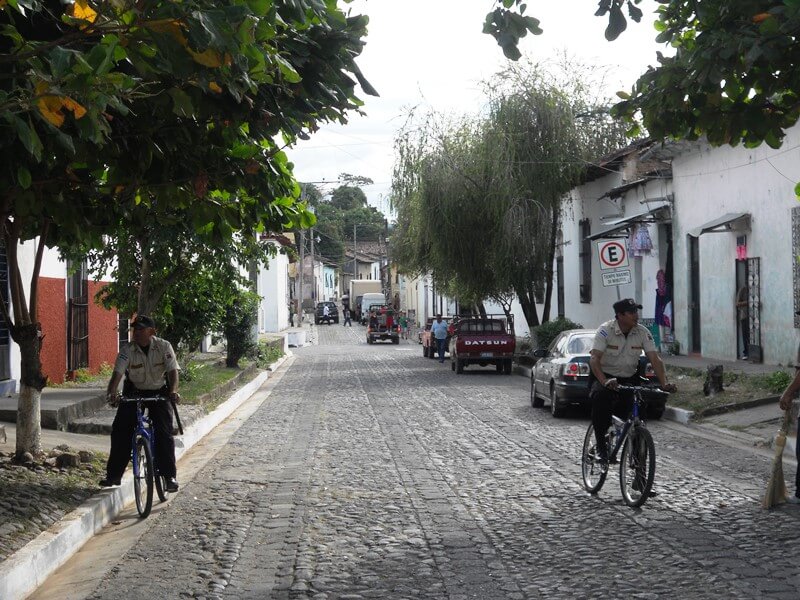
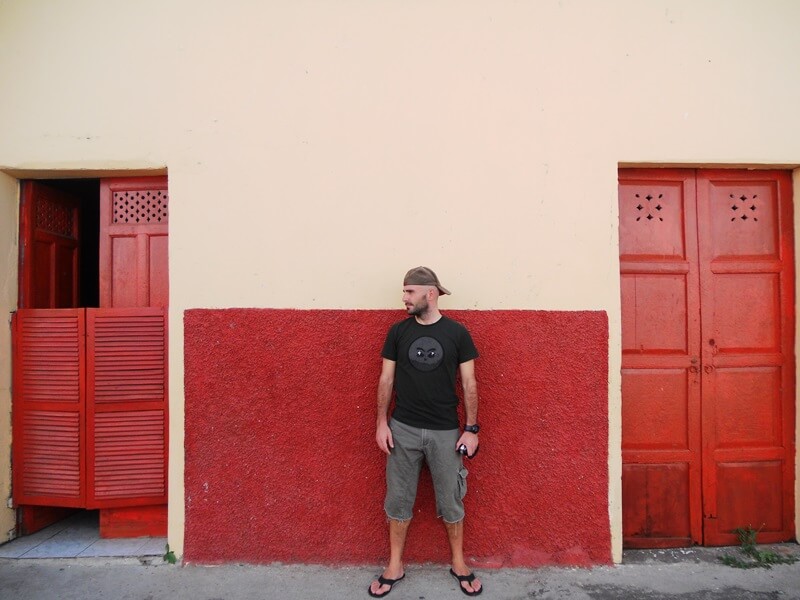
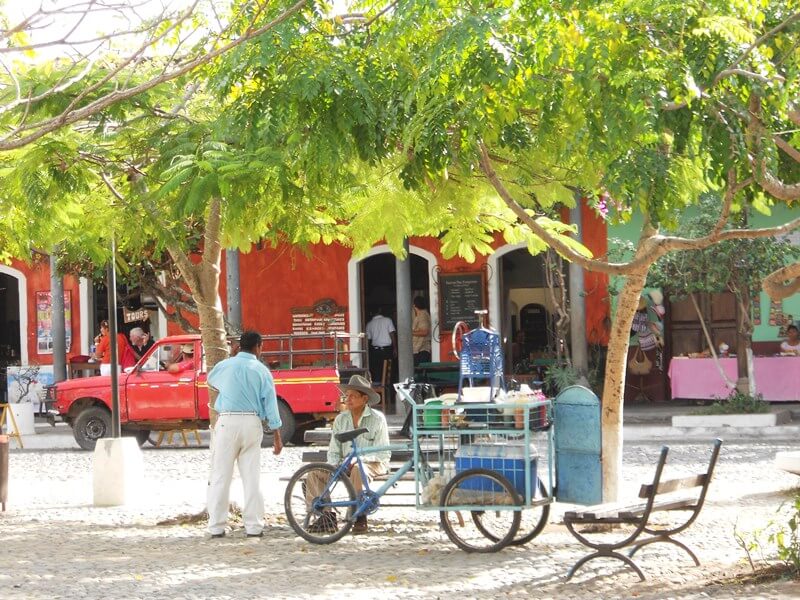
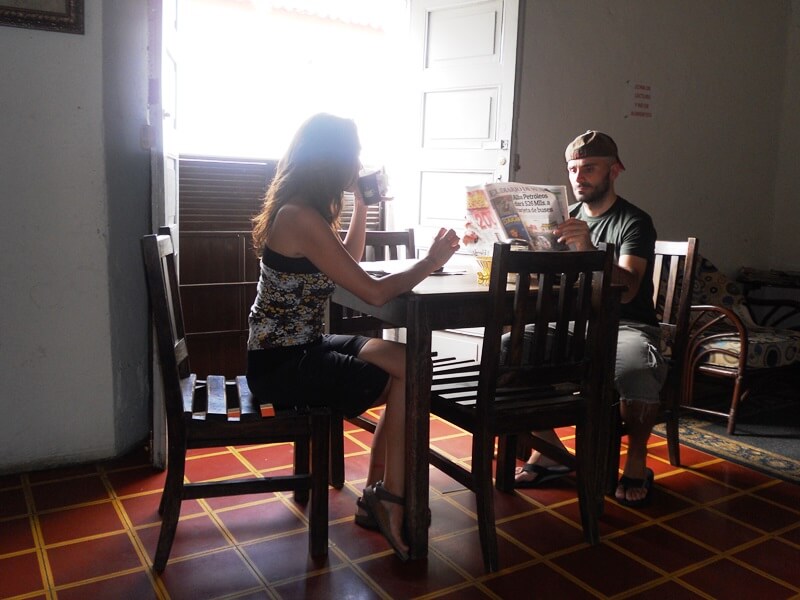
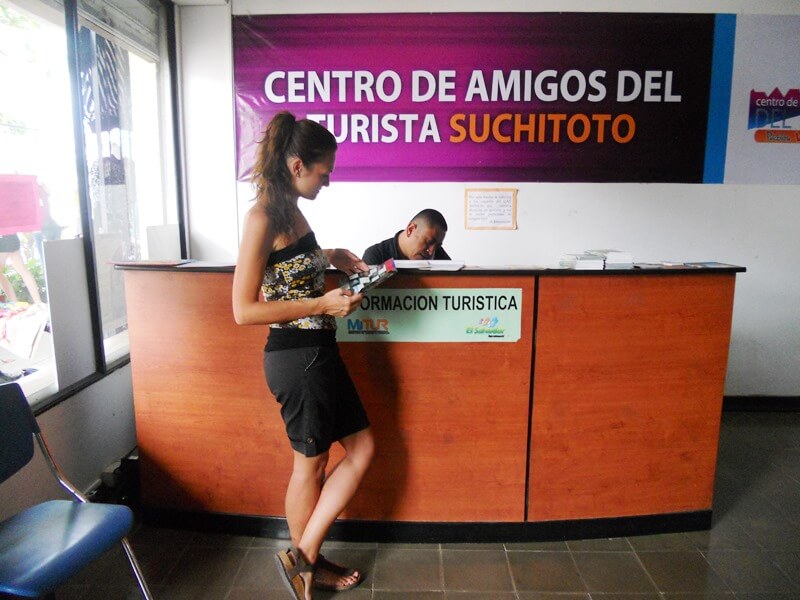
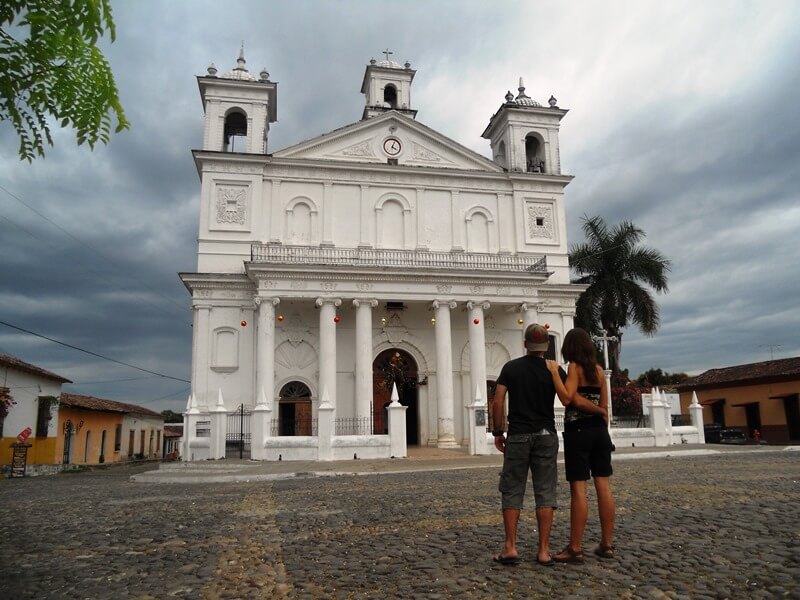
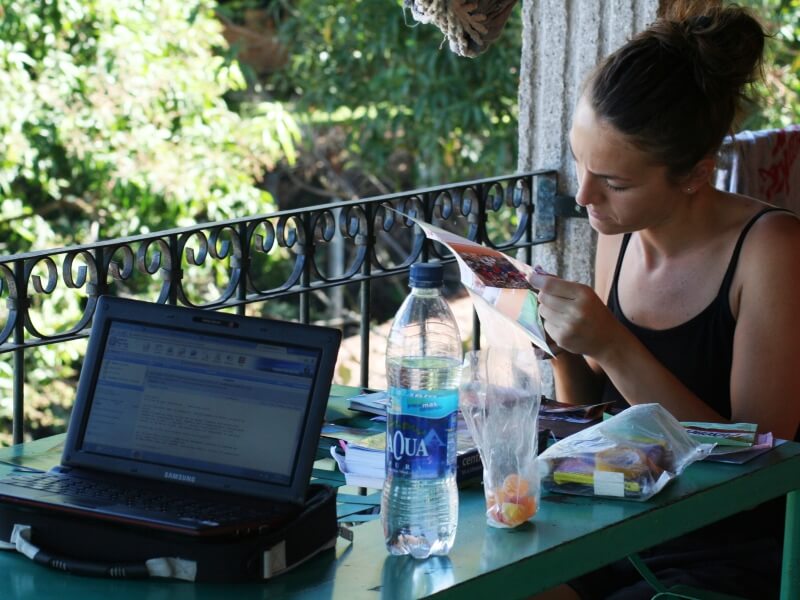
We wake up very early to face this long day. It's five in the morning and it's still dark outside ... in the distance some small lantern light from the nearby lake can be seen ...
Backpacks are heavy in the early morning ... the town, already sleepy of itself, rests blissfully ... around there are only a few employees who go to San Salvador with its well-ironed polo shirt and the emblem of their company or some old man who, in boots and cowboy hat, machete with a shoulder goes to the woods in search of who knows what.
It is 05.48 when we arrive at the small "parada" of the bus, we collapse to sit on a sidewalk to rest, but we do not last long ... we are literally attacked by an "army" of small but bastard ants that are so bad ... we dance like crazy to free ourselves from the killer attack ...
Finally at 06.20 our colorful bus arrives. This time the driver's assistant does not scream the name of the destination and does not try to push people inside ... perhaps he too has just woken up.
In an hour we reach the town of Las Aguilares which is nothing more than a large sorting road for the south or north of El Salvador.
We manage to conquer the first two seats of the bus and therefore we have the opportunity to enjoy scenes of Salvadoran daily life ...
Las Aguilares. An enormous sign that frames an elevated passageway invites citizens to vote for "Pena" in the next "Alcadesa" (mayor) election.
We cross the road and wait together with the street vendors for bus n ° 119, destination: El Poy (the frontier) while a young lady in flesh packs the last "pupusas".
Here is our bus overloaded to slow down, I take the backpacks in the luggage rack, I pass the last sellers of mango and fried bananas and finally I sit down!
El Poy. Borders have always fascinated me. The bus driver shows us the immigration office in the distance and we, hand in hand, pass the long line of waiting trucks, show the passport at the checkpoint, reject a couple of guys with two big wads of banknotes from all over the Center America and when yet another policeman approaches us I can only smile at him saying: “El Salvador? lindissimo!”
Exit stamp: start a new adventure!
We are in Honduras!
As always happens when we cross a new frontier, I really feel the need to repeat it, to hear me say that we are in a new nation, almost like a superstitious ritual!
We are in Honduras! My voice resounds in the air and echoes in my thoughts: it is the beginning of a new life experience.
A sleepy white and blue striped flag with five stars in the center doesn't even have the strength to wave. We pay the 120 Lempiras entrance fees, change 20 dollars from a nice old man and by taxi we arrive in the border town of Nueva Ocotepeque, from there we will continue, by bus, hopefully, to La Entrada ... we are still quite far away but we are calm, the sun shines high in the sky, it is only 10.16 in the morning! The ten minutes of waiting for the departure promised by the driver become 50, but it doesn't matter, we are in no hurry.
It starts, every village we go through becomes a reason for "battle" for the poor "helper" of the driver who, as soon as he sees a potential passenger, literally flies from the bus and returns with suitcases, bags, envelopes and new customers ... in the meantime, those who sell sell fresh water in transparent sachets or “pan de huevo” while the bus continues to the land of the Maya.
It is late afternoon when we leave La Entrada for the last stop. We climb up the mountain and, while I try to keep our backpacks lying on the roof of the minivan under control, the surrounding landscape changes completely.
Finally: "Bienvenidos a Copan Ruinas".
The ruins of Copan represent economic and political life in the Mayan days.
One is immediately struck by the architectural grandeur in the place where the kings resided or where the sacred rites took place. We turn and sneak everywhere until we reach the "field for the ball game" where we relax relaxing on the lawn not far from the majestic "Hieroglyphic staircase". Close your eyes and imagine the "jaguars or shell" Kings attending the Mayan rites, faces painted and adorned with feathers, men with costumes with large wings dancing on the steps of the pyramids while others, invested by divine powers, raise a still beating heart to the sky while an eclipse darkened the sky.
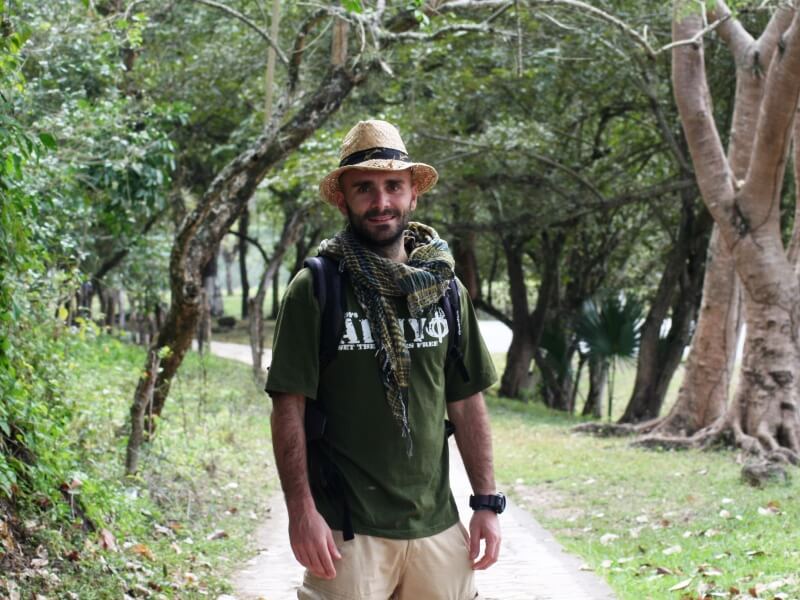
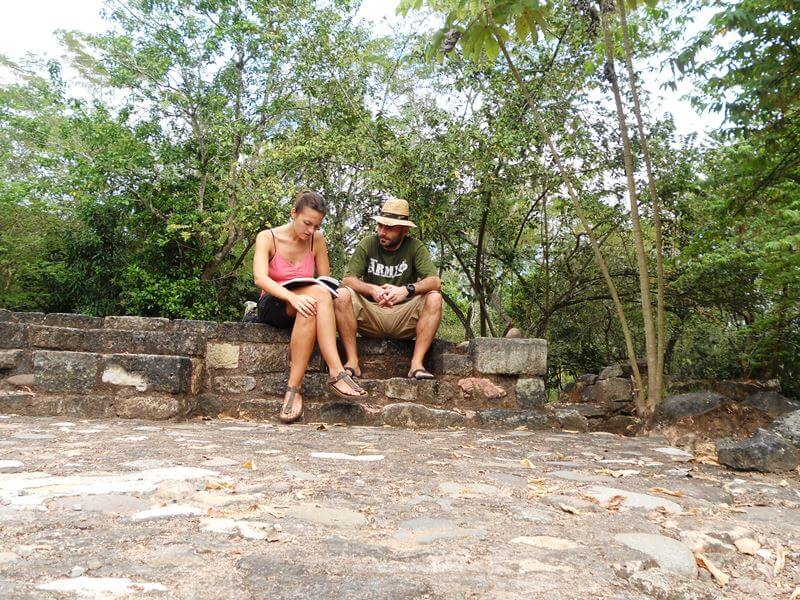
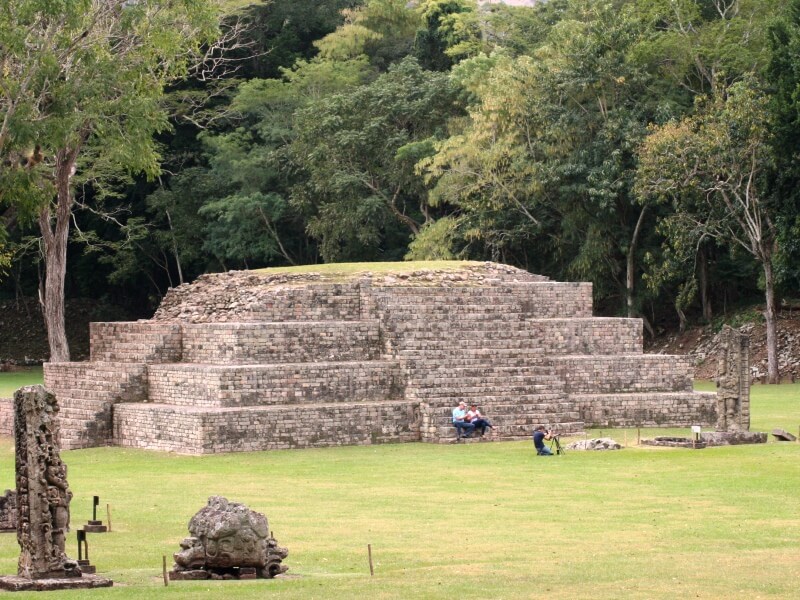
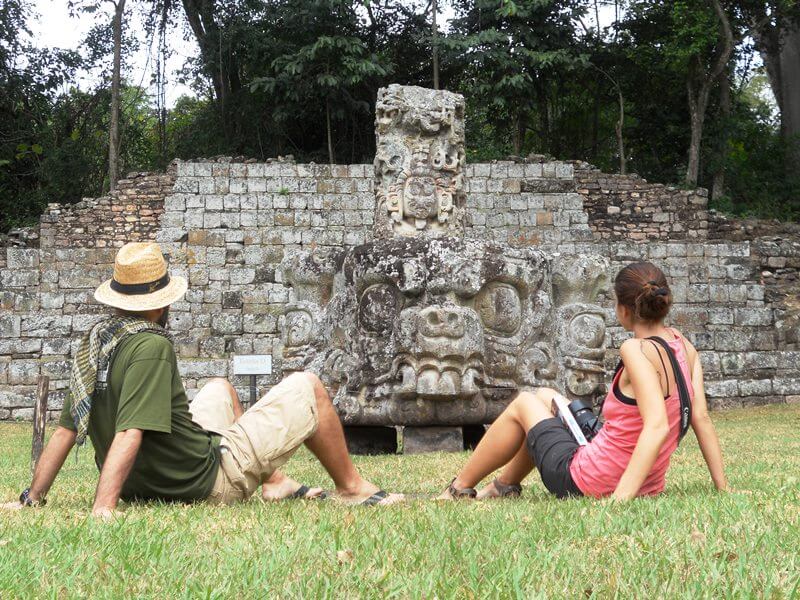
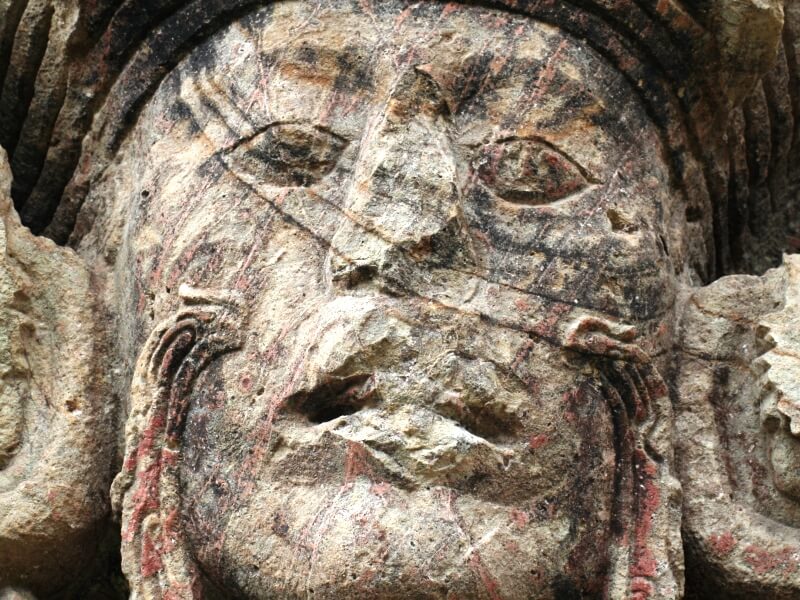
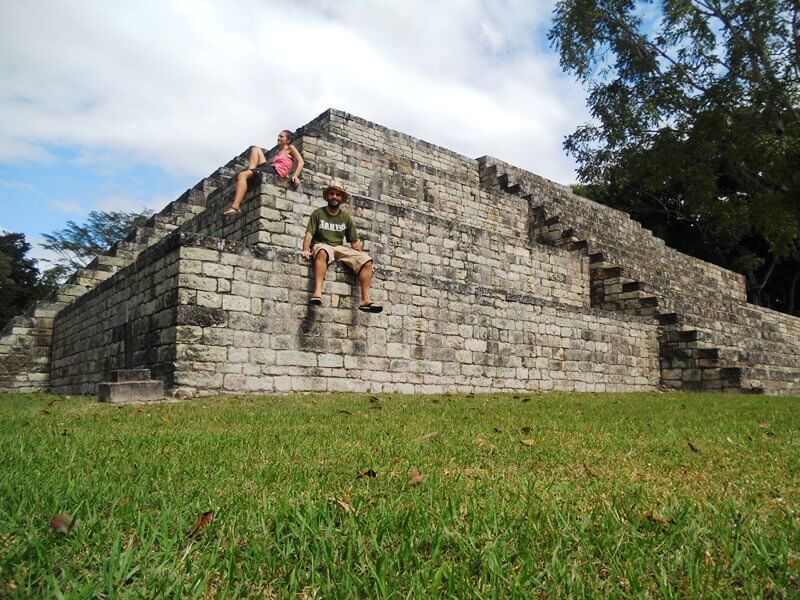
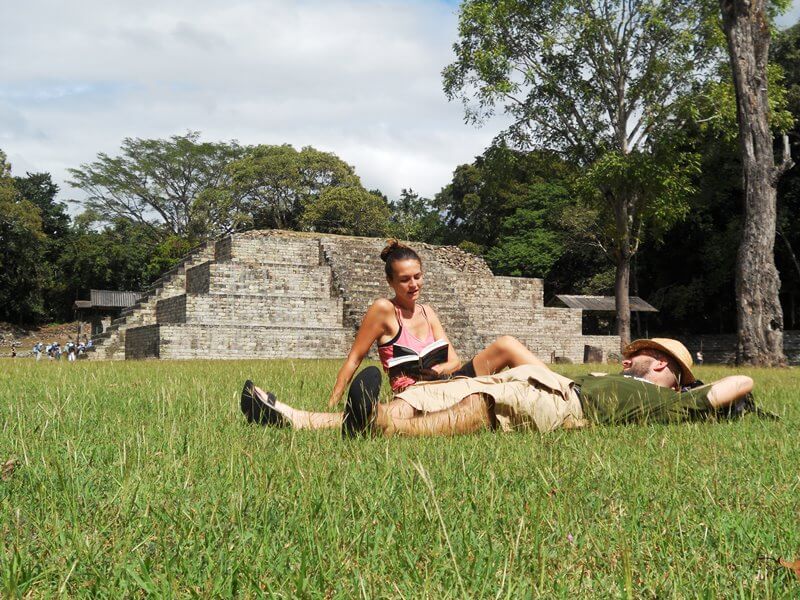
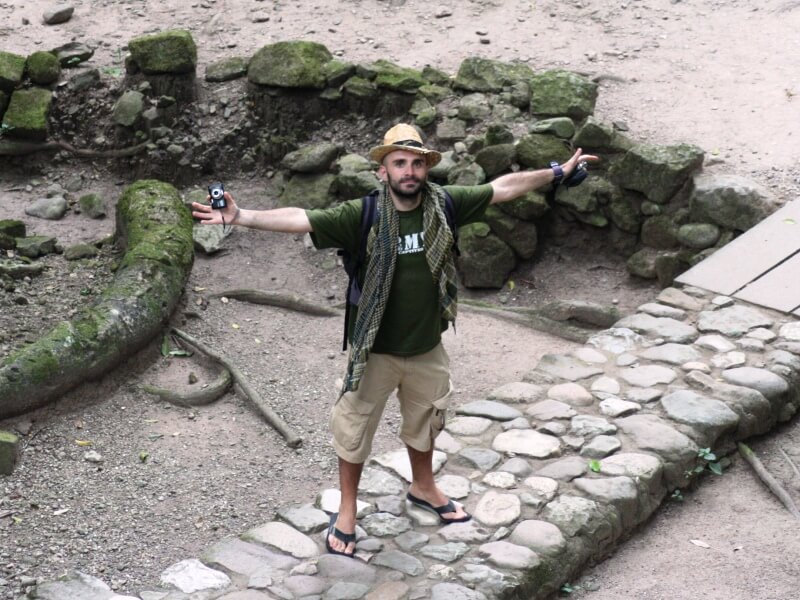
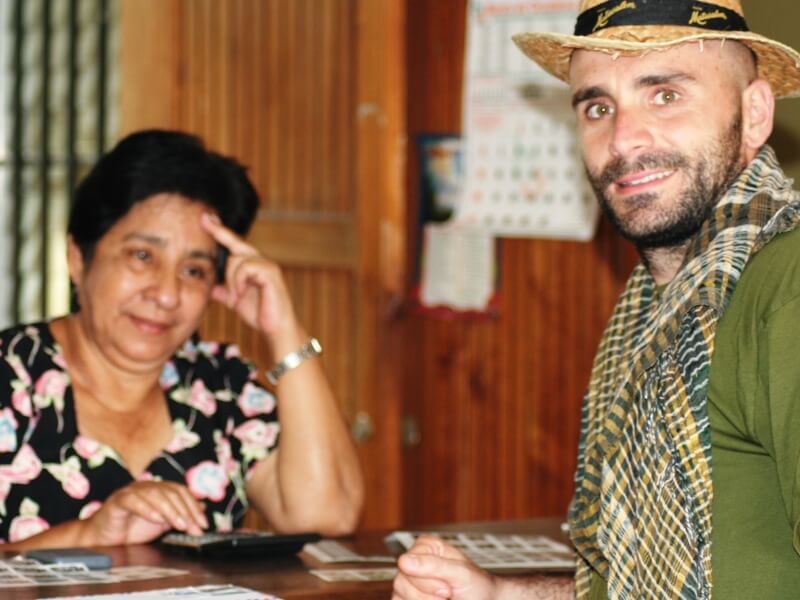
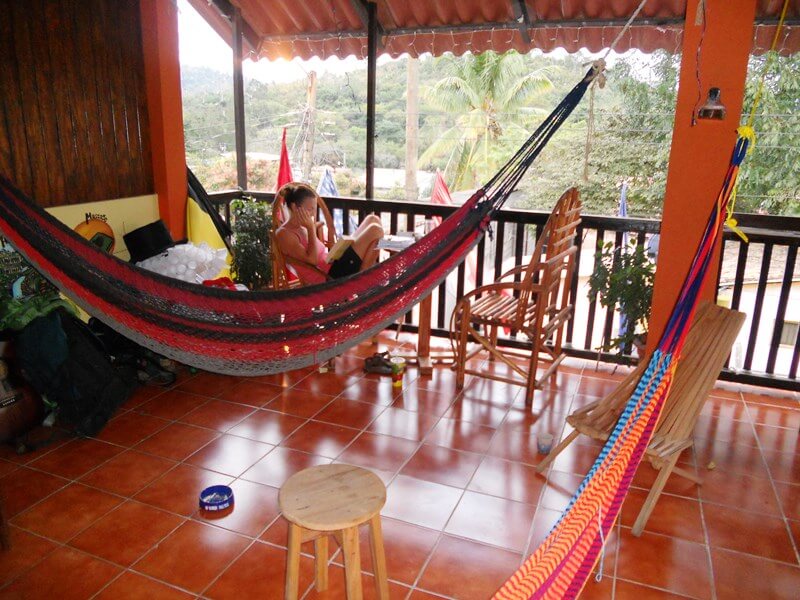
We start at dawn, today we cross almost all of Honduras from south to north.
We stop in San Pedro Sula, one of the cities with the highest number of murders per day, just to change buses and we leave immediately for La Ceiba.
The landscape is to be enchanted, many hours of various buses immersed in dense vegetation that seems to fall on you. Bright green, everything sparkles with the sun's rays.
At the port of La Ceiba, in addition to the ferry ticket, they give us a pill against seasickness ... the situation becomes worrying ... and they were right, the hour and a half that separates us from the small Caribbean island puts a strain on our stomach and so half the Passenger passes the trip with his head in a plastic bag.
Incredible waves, it feels like being on a roller coaster. We land around 6 pm, take a taxi, leave the backpacks in our damp room and go and whisk three empanadas stuffed with cherry tomatoes, chicken, onions, beans and cheese: delicious! Welcome to the Caribbean!
The beach with a transparent sea is four steps away from our guest house. We stay a couple of hours in the sun when we hear a gospel song coming from an all-white church right on the beach.
Intrigued, we approach and despite our beach clothing, they immediately invite us to enter. All the party-dressed ladies turn to us and smile at us. A big black woman approaches Mark's ear and whispers: "We are happy to have you here." What a joy, what a party, what music. In this part of Honduras we do not speak Spanish but English, the skin is coffee-colored, reggae music echoes everywhere.
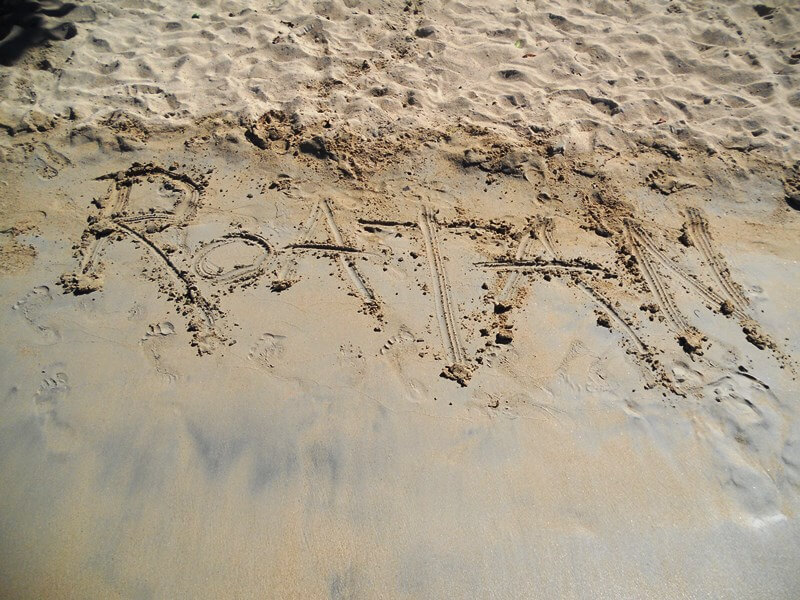
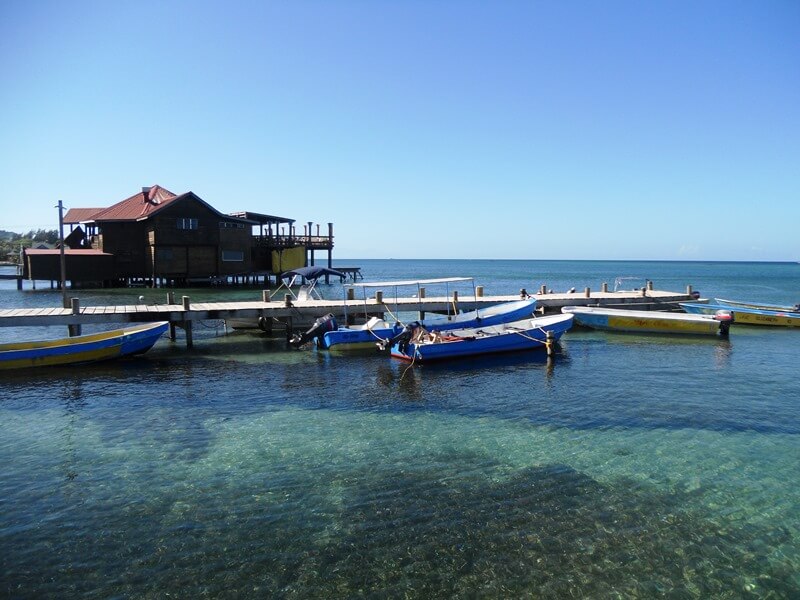
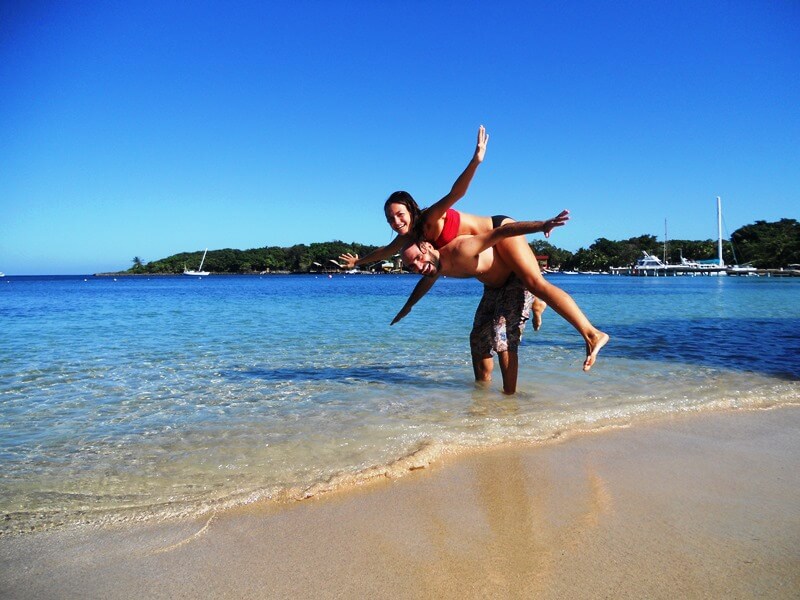
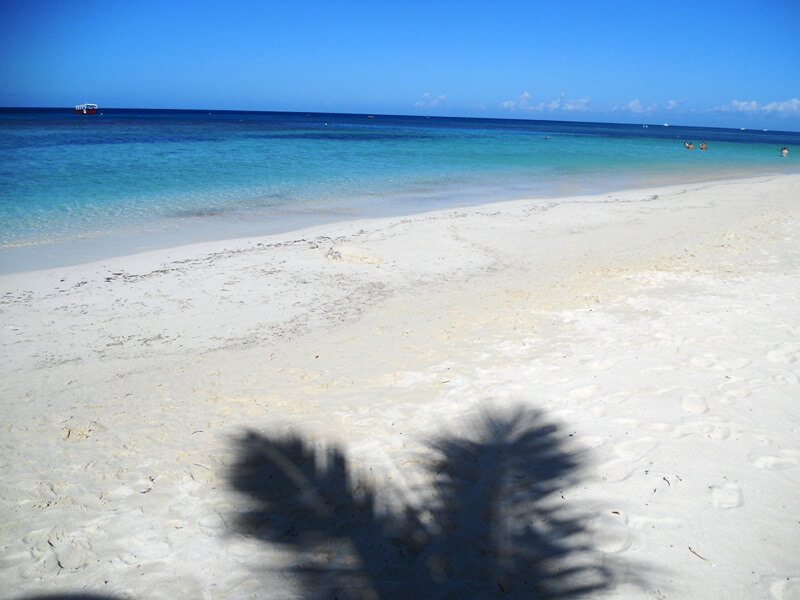
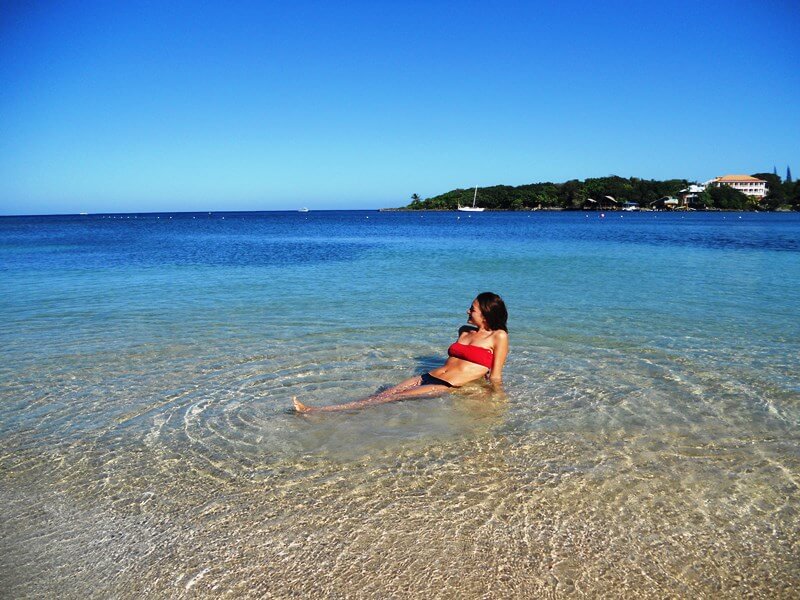
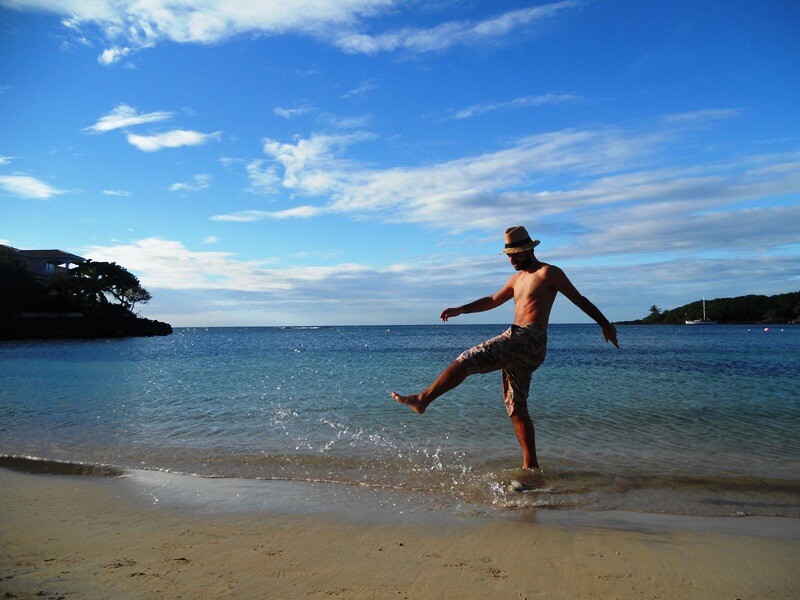
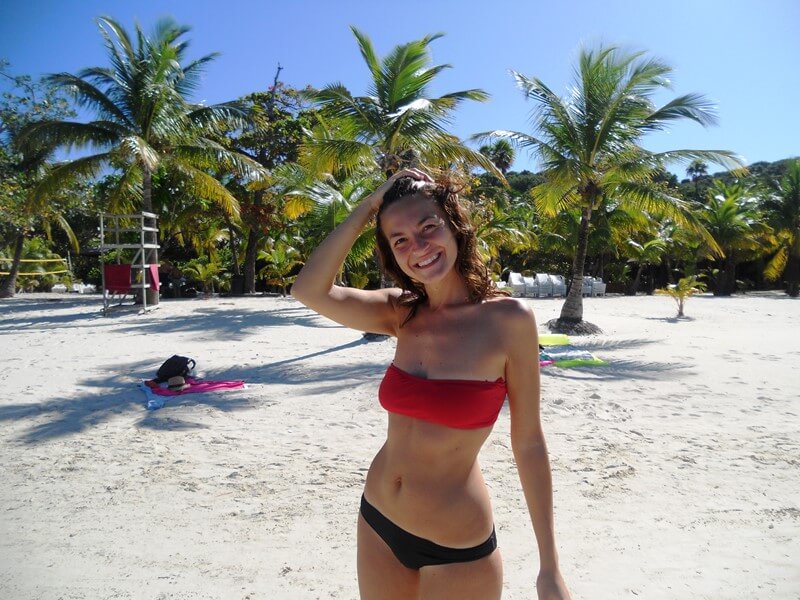
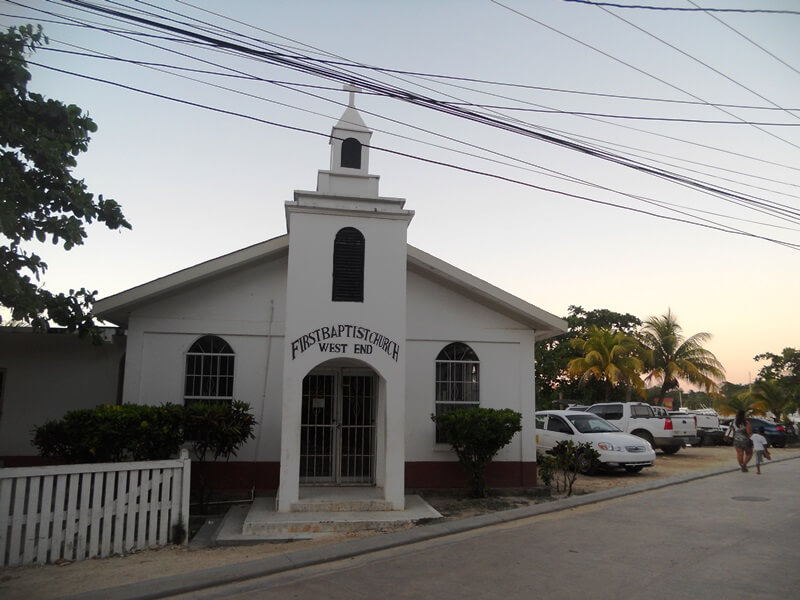
On the boat that from West End led us to West Bay, with a wonderful day and a sea so transparent as to seem fake, we looked like two little pirates ready to board.
Once we got off the beach we are so enraptured by what we see that we hardly take any pictures ... the landscape is an advertising magazine ... coconut palms, fine white sand, water so bright that the boats seemed to hover in the air ...
In a few seconds we leave all our belongings and dive into the water.
We spend the whole day between baths, sun and relaxation ... in the end, burned despite the "50" kg of sunscreen cream and pierced by mosquitoes and various sand insects, just before sunset we decide to return to the West End by land.
Even this time, despite the tropical paradise, we opted for a choice from travelers rather than holiday tourists and, far from the extra luxury resorts, we found a very modest guest house managed by locals and which proved to be the most suitable choice to us. This is to say that even terrestrial paradises like this can be enjoyed by penniless backpackers without spending a fortune!
At 07.00 in the morning our ferry leaves for La Ceiba while two cruise ships land on the island of Roatan.
We quickly retrieve our backpacks and by taxi we run to the bus terminal for the capital.
We manage to catch one on the fly and in seven hours we reach the infamous Tegucigalpa, for friends: "Tegus".
Tegucigalpa is a frightening city. You can turn it far and wide but you are always in its suburbs. During the day you seem to swim in an ocean of houses that branch out in all directions as far as the eye can see ... at night you only see many yellowish lights, the lampposts, which climb up the hills, dive into the valleys and expand into the plains.
We meet Pepe and a crazy Korean boy who has been traveling for a year: Wong. Pepe, like all the people of this wonderful worldwide couchsurfing community, is very helpful and nice and shows us his city a little before going to dinner in a delicious local restaurant with pupusas and a fondue of corn and beans.
We end the evening drinking a beer in a clandestine bar in the suburb of Tegucigalpa, joking, laughing and dancing until 2 in the morning. In four hours we are leaving for Nicaragua!
At 5 in the morning our adventure to Leòn begins. We cover 250 km in 10 hours! That's Central America!
First a bus to Choluteca, a village an hour from the border where there was not even asphalt! Only stalls and confusion.
On board a minivan, with a Dutch couple: Martin and Maria we reach the border with Nicaragua for the usual pleasant walk between one immigration office and another.
Stamp of salida from Honduras, change the lempiras in cordoba from one of the many junk dealers on the street, we cross the bridge that divides the two nations when a big bill gives us the "Bienvenido in Nicaragua”.
The rude Nicaguarese immigration agents charge us $ 12 apiece for entry without giving us any further explanations and just in time to run to the small bus stop for Leòn ... maybe! In fact, we soon discover that we can only continue to Chinandega, a hub town in the hinterland, from there we finally manage to reach our desired destination.
We stay in a small oasis "Casa Ivana", a stone's throw from the central square and despite the fatigue, left the backpacks and after a relaxing shower, we dive into the streets of this town "with decadent colonial charm" as Lonely Planet defines it .
Everywhere murals testifying to the recent past of the revolution and the civil war, this nation has really suffered so much from its civil war and still shows its signs everywhere.
Museo de Leyendas y mitos. A boy guides us by telling us the old Leonese legends up to the descriptions of the bloody tortures and outrages to human rights that perpetrated until 13 June 1979, when the commander Tellez opened a passage in the defenses of Somoza, freeing all prisoners.
We move towards the "Basilica de la Asunciòn" and right in front of it stands the "Museo de la Rivoluciòn", we decide to stop and visit it. We are led by Marcelo, a guerrilla fighter for the free Leon revolution.
Marcelo explains in detail the whole history of Nicaragua starting from General Sandino, his life, his deeds, his battles and the dream of freeing Leòn, the love for his country and his people, the climb to the power of the Somoza dynasty, the revolutionaries united with one purpose, the fighting women, barbarism, violence, suffering but with them the great hope of being free, of walking peacefully on the streets of your country, of expressing your own thought. That's why Marcelo took up arms at the age of 16. It was moving to see that man talking about war, a war experienced firsthand with the heart and soul.
Viva la revoluciòn, viva Leòn libera.
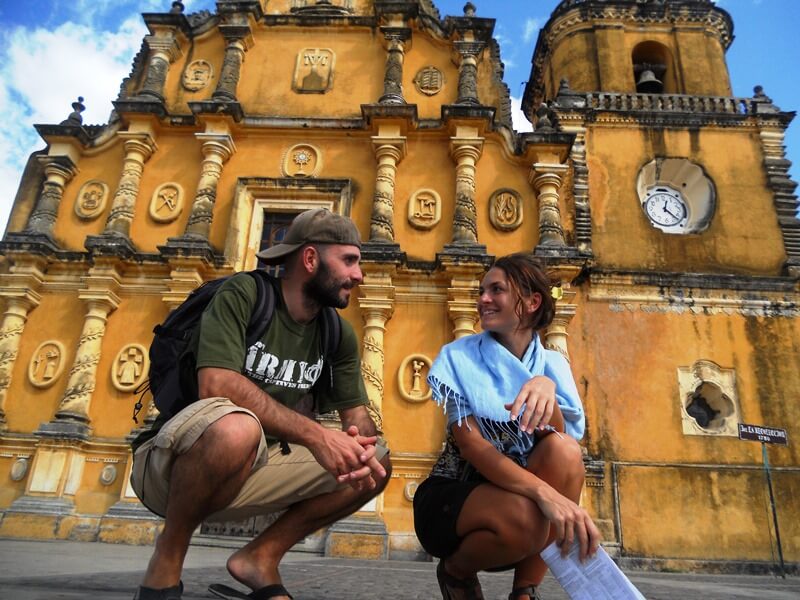

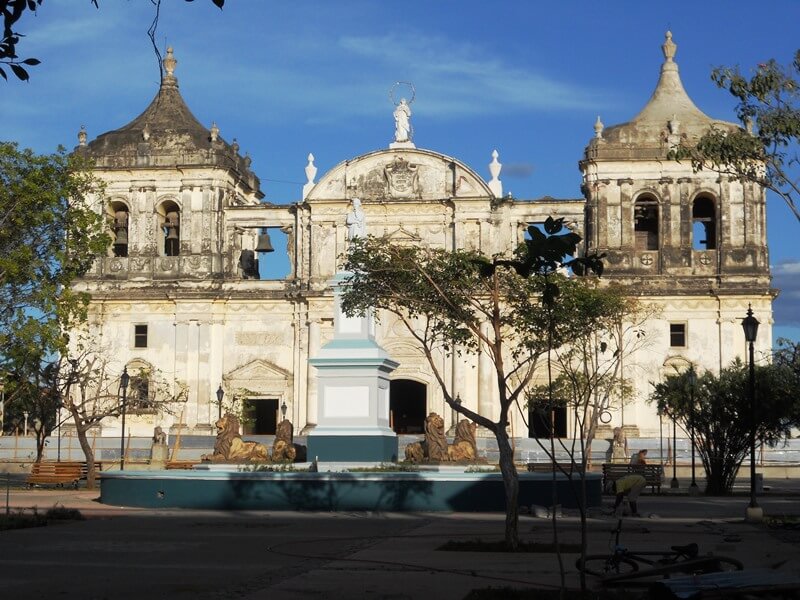
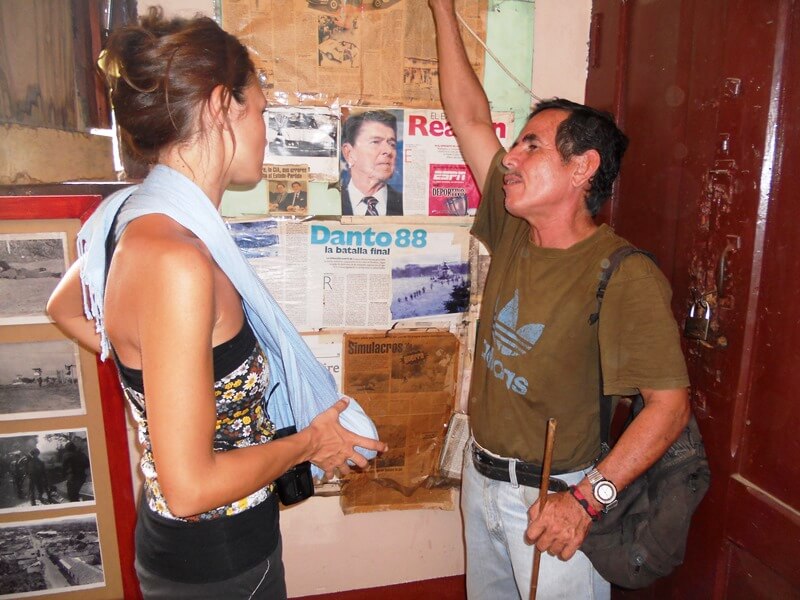
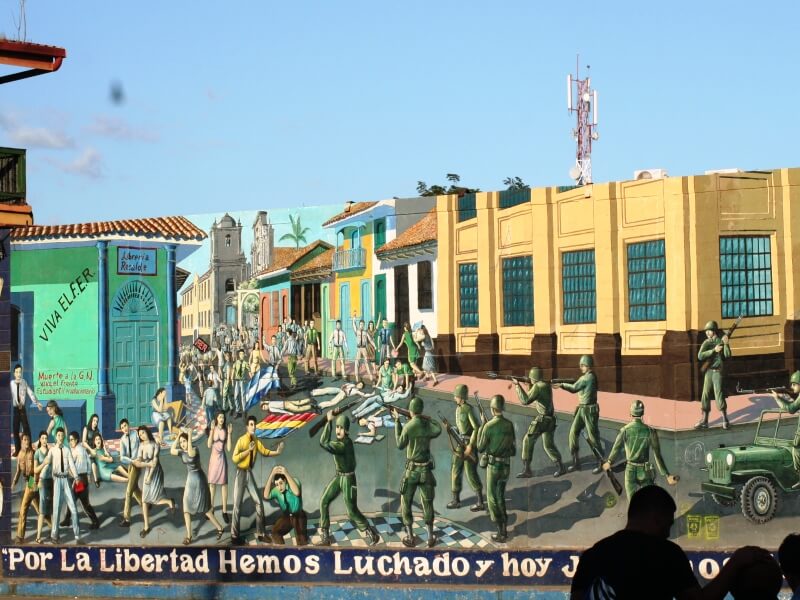
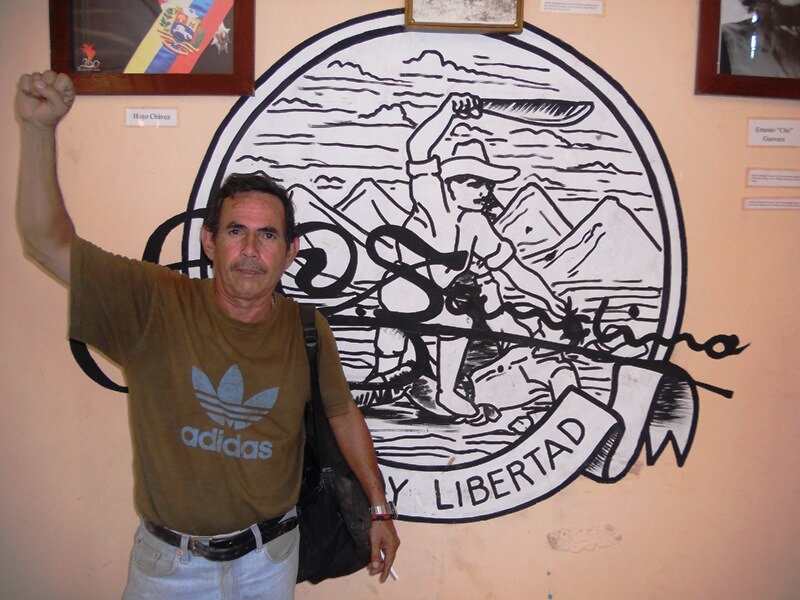
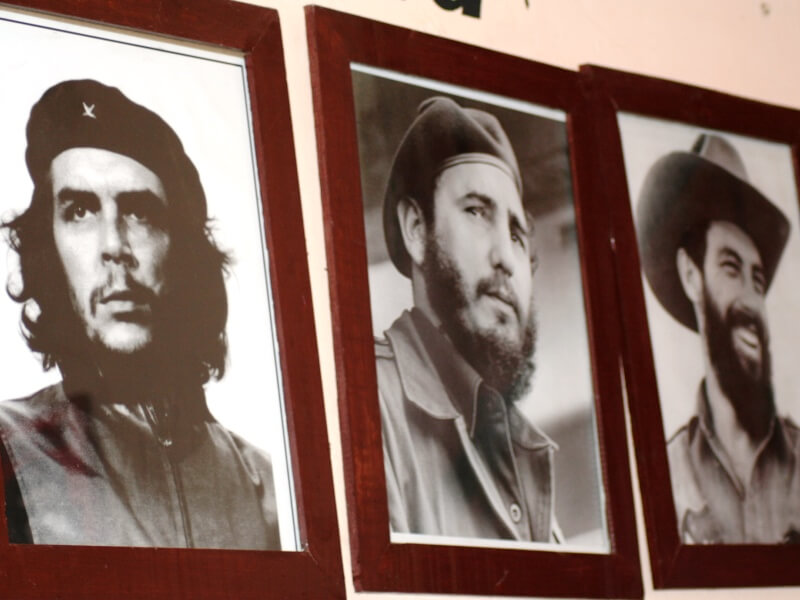
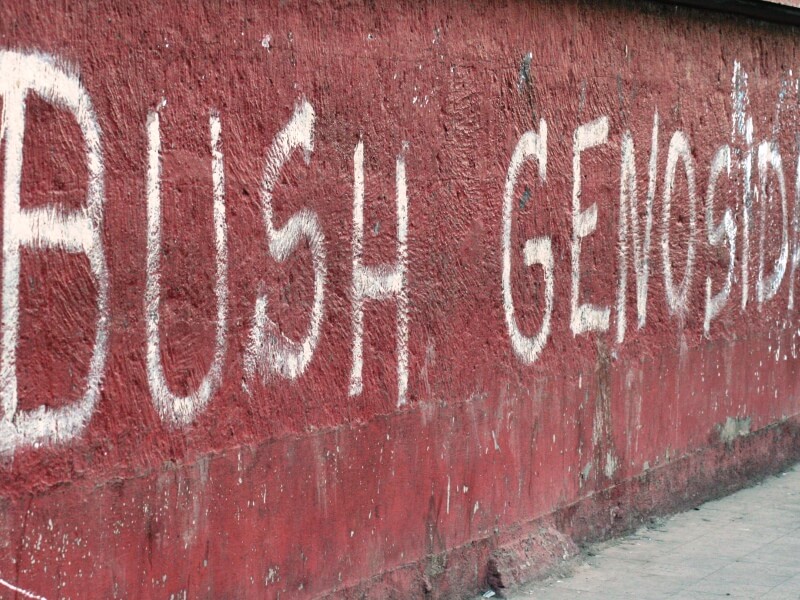
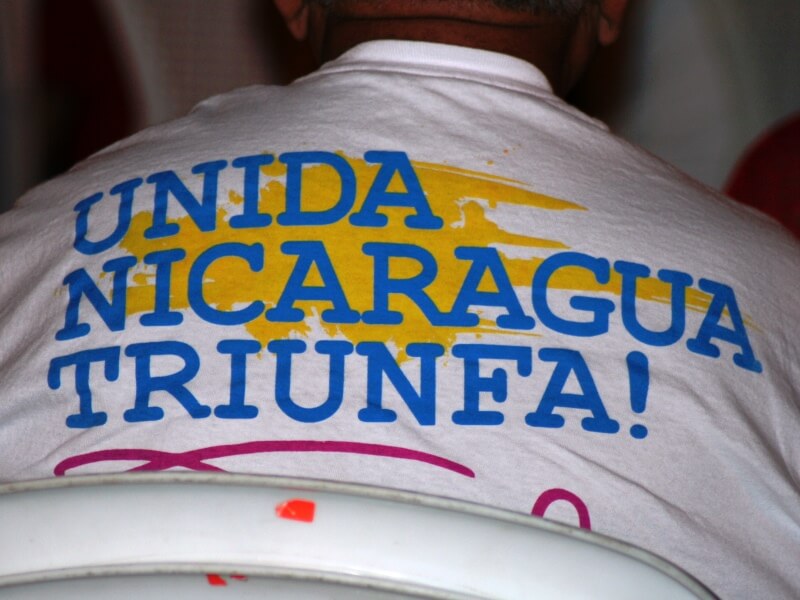
Today the inauguration of the new central square is celebrated and there is also the inauguration speech of the new mayor! The festively lit Basilica de la Asunciòn is even more beautiful! They set up a stage on which many dancers performed in Nicaraguan folk dances with masks and fireworks.
We decide to stay another day to enjoy this delightful town even more!
Timeless alarm clock, relaxing breakfast with yogurt and fruit in the garden, aimless stroll through the characteristic streets of the city, visit the cathedral and its dome; lunch at the usual place "Asados de Pelibuey" and long visit to the "Ortiz Gurdian" Museum, famous because it contains the most important collection of paintings from Central America.
After a fleeting bus change in the capital Managua we continue towards the old Granada. Shortly after we are already comfortably seated in the main square enjoying an excellent "vigoron" (yuca in mashed potatoes, slightly spicy vegetables and fried pork rind)!
With a "raspados" (a sort of granita with spices or tropical fruits) in hand we walk through the narrow streets of this pretty colonial town.
The churches follow one after the other, all with very picturesque but somewhat sparse facades inside.
We visit the house where Sister Maria Romero Meneses lived, the first saint of Central America.
We end the day in the central square where a good band plays old songs while homeless and various homeless people dance happily. What a feeling of peace and union, it seemed that prejudices and differences no longer existed.
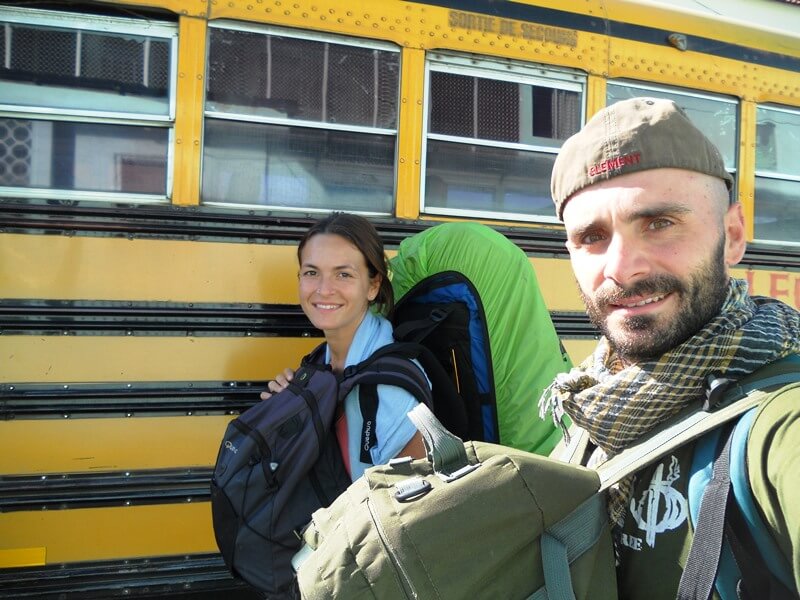
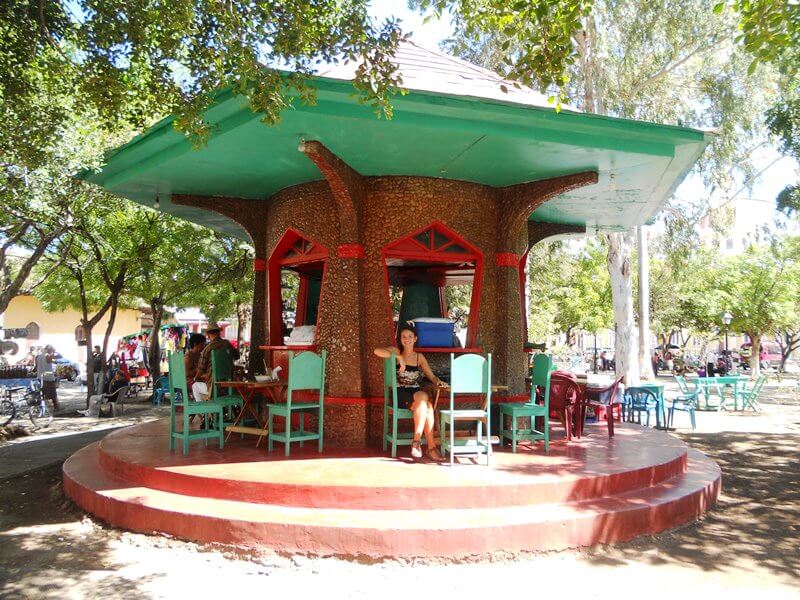
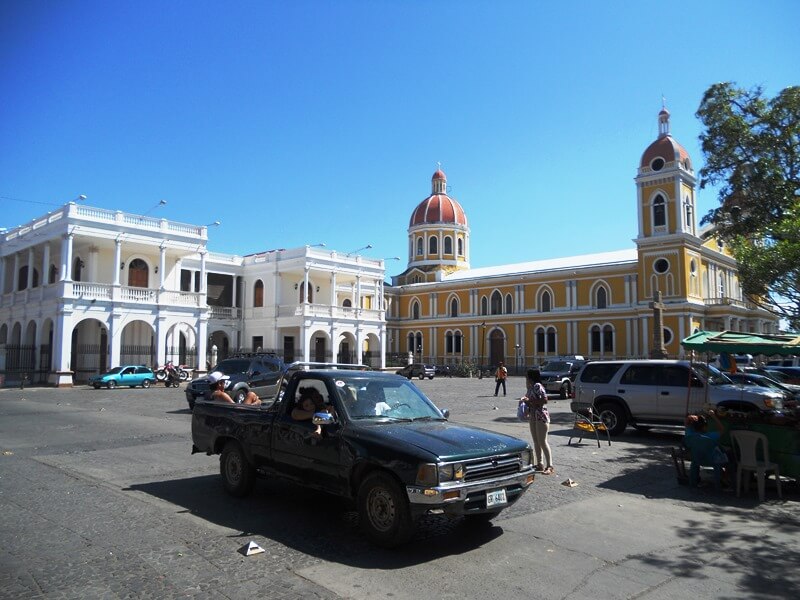
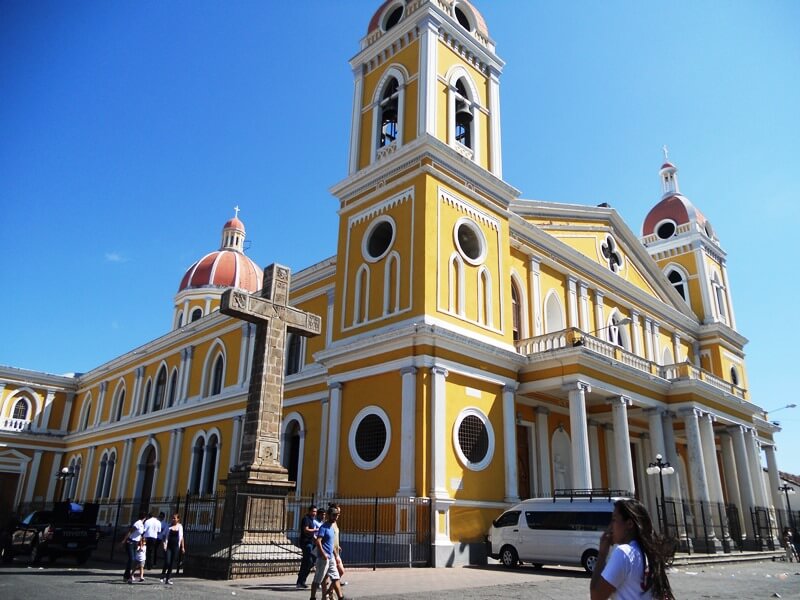
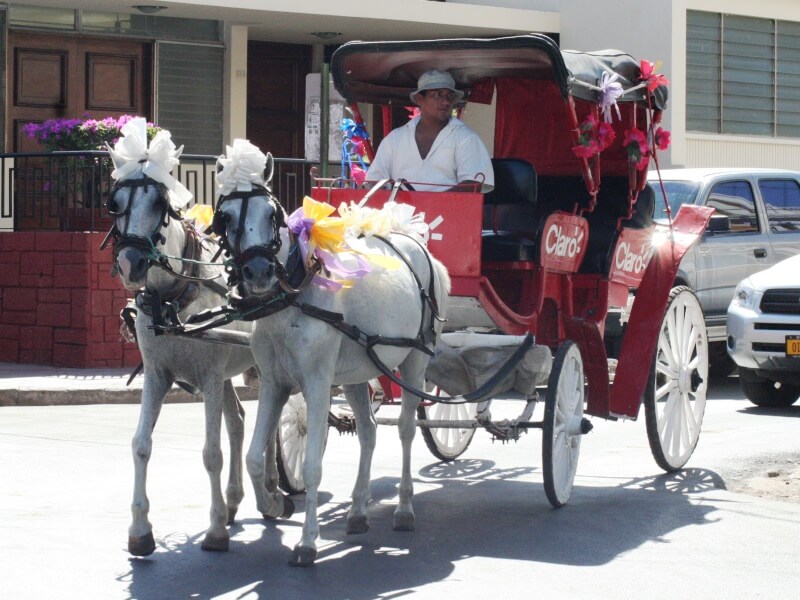
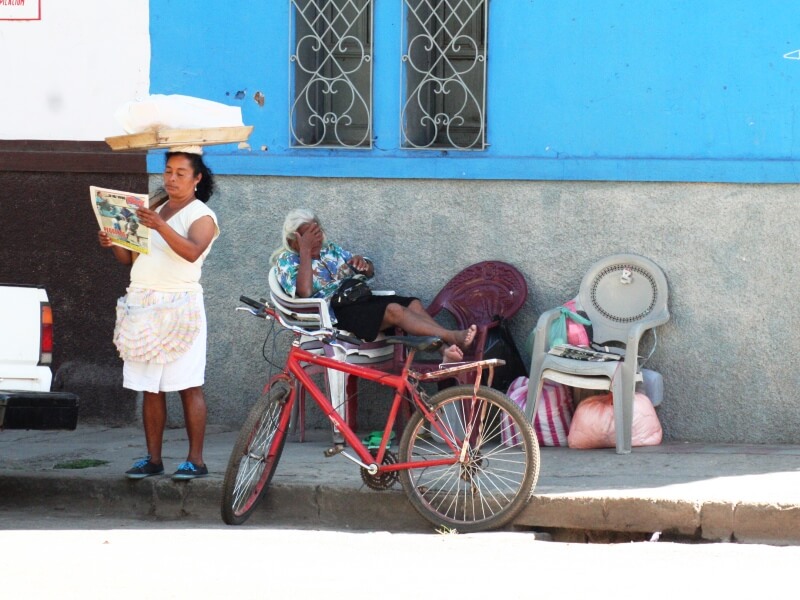
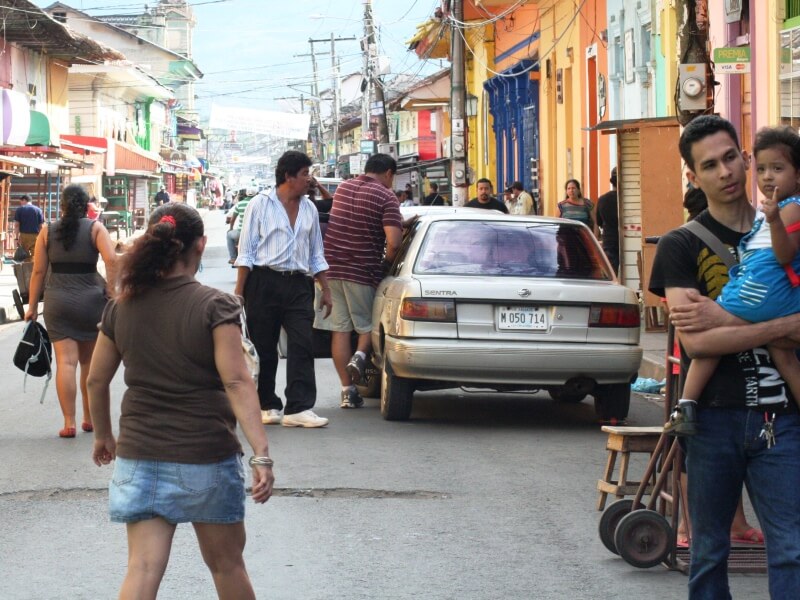
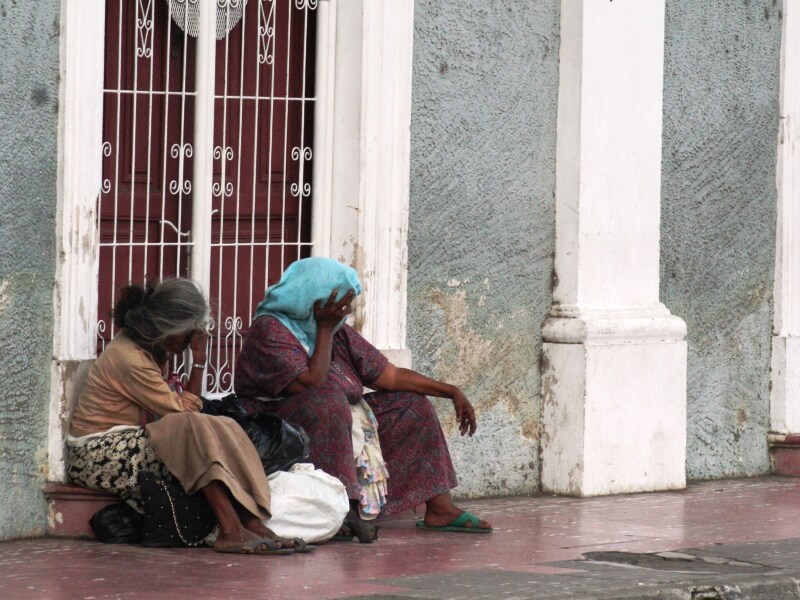
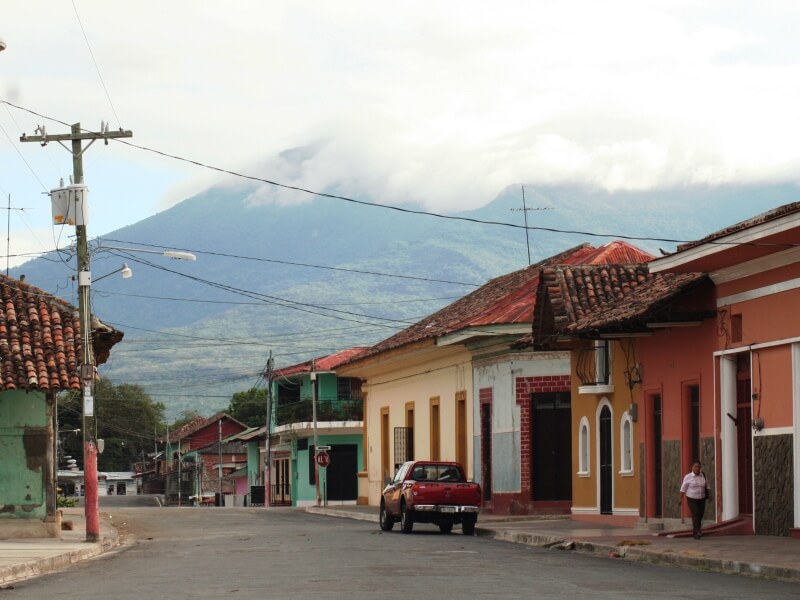
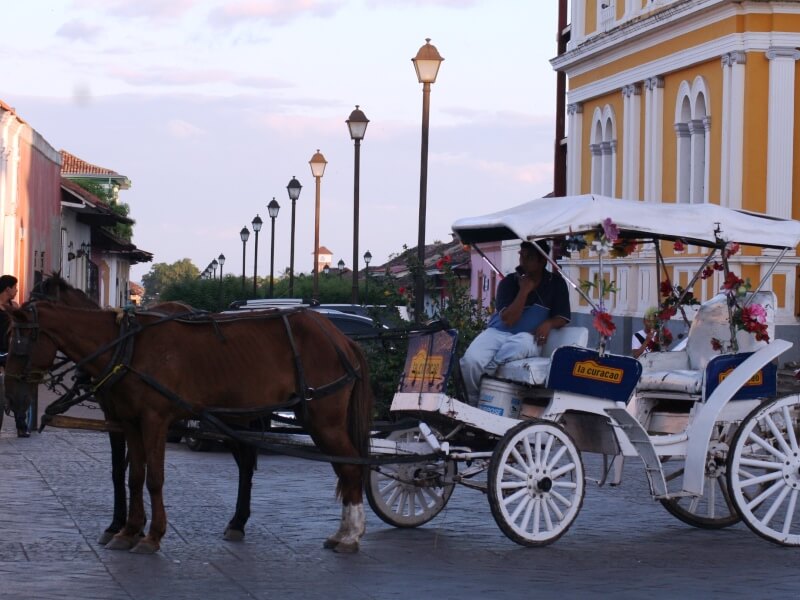
Classic transfer day. Various buses, a few hours of travel and here we are at the port of San Jorge ready to embark for Moyogalpa, in the’Ometepe Island.
We have lunch with “pollo asado con arroz y frijoles” in the “Tiburon” restaurant a stone's throw from Lake Nicaragua.
We wander a little by bicycle through the streets of this peaceful village before retiring to our oasis of peace "Soma hotel" in the most lush greenery to prepare for our next trips.
We come to know that the "Rincon de la Vieja", a volcano in the north of Costa Rica is in full eruption which is why we are forced to change all our plans ... but that's the beauty of road trips.
We rent a scooter and set off to discover the island that will host us these days.
We decide to start from the east bank, from Playa Santo Domingo.
On the street we are enchanted to admire the peaceful flow of the life of the islanders, hundreds of free and wild cows and horses observe us a little perplexed, many scenes from "The old farm" with piglets, broods, chicks ...
An hour and a half later we find ourselves in the town of Altagracia, we check the map and: "Hell, we went a little too far" ... we ask for information on the usual smiling and helpful islander and 15 minutes later we park our scooter on the banks of the rough lake, we are in Playa Santo Domingo.
Our eyes fill with wonder: "Ojo de Agua". A real natural swimming pool in the heart of the jungle fed by sulphurous, volcanic water with its backdrops with so particular colors that only Nature can paint. We thus spend several hours in complete relaxation dozing under a palm tree or enjoying this fresh water.
We skirt the slopes of the imposing Conception Volcano until we reach Charco Verde.
A journey into the wildest nature along the banks of a mangrove lagoon and the majestic Lake Nicaragua.
What a feeling to sit on the shoreline of the stormy lake, the trees bent by the wind that plunged with their peaks in those waters so murky created disquiet.
We looked like two castaways.
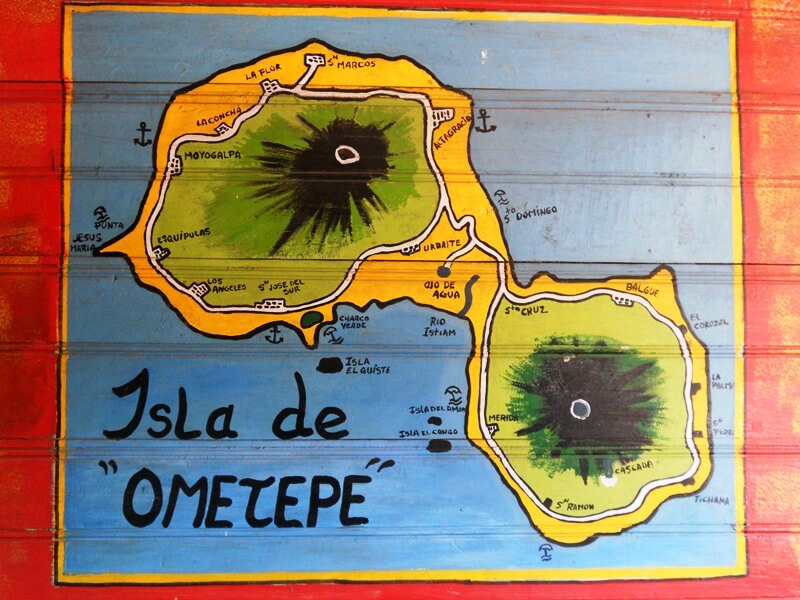
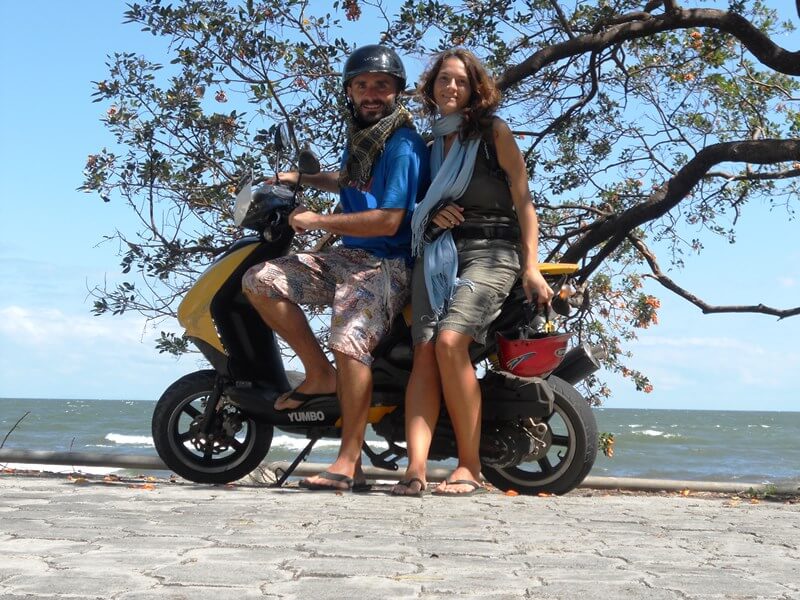
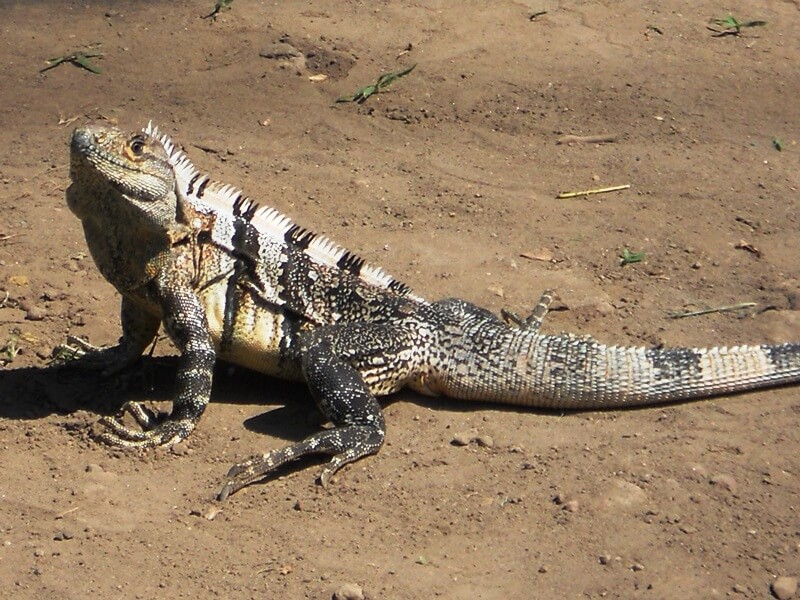
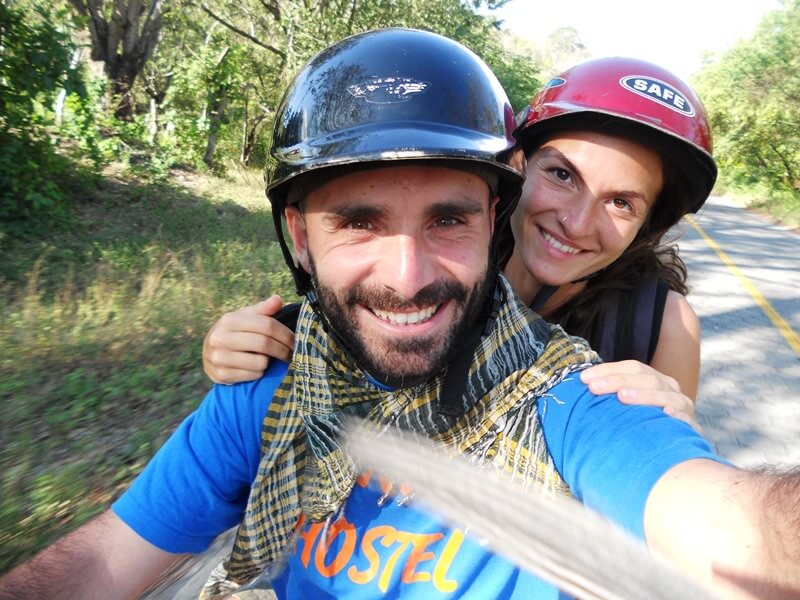
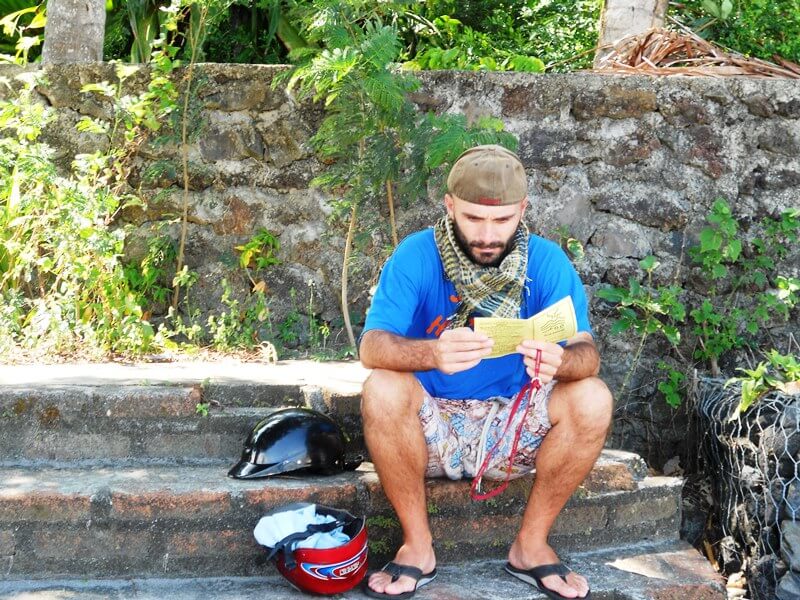
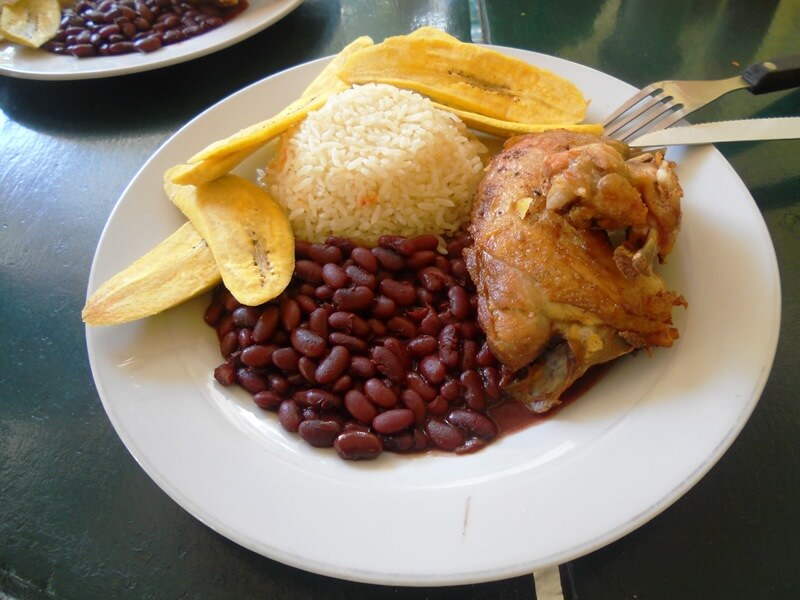
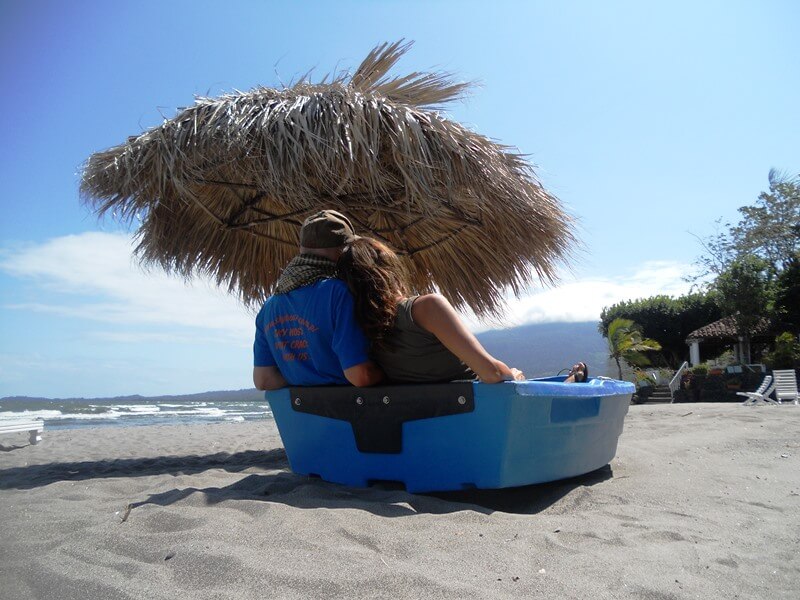
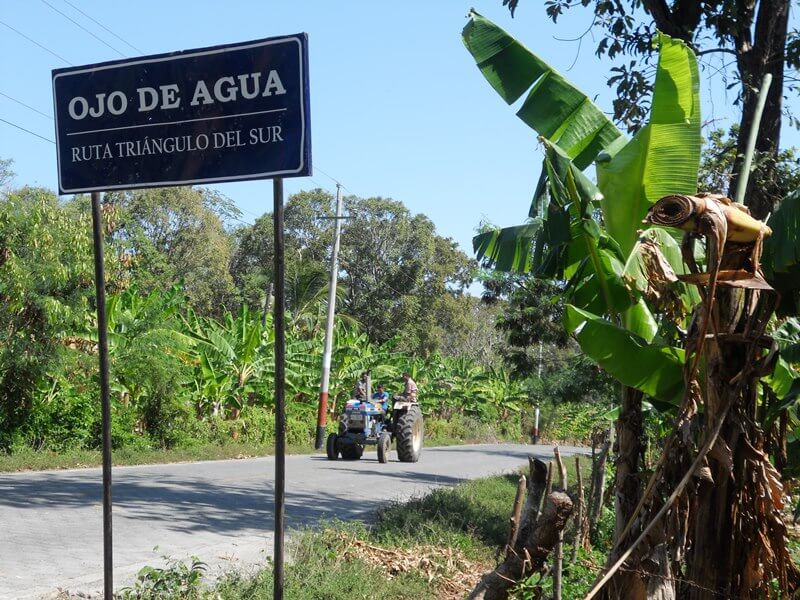
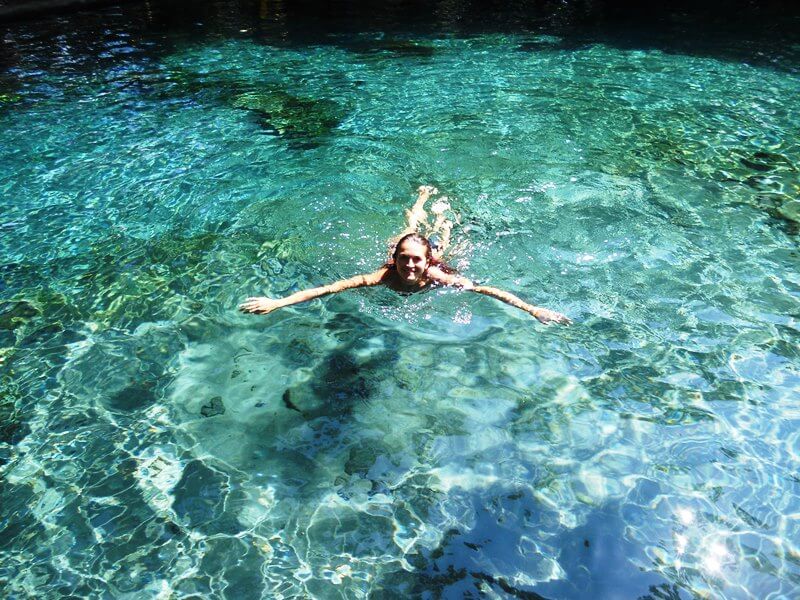
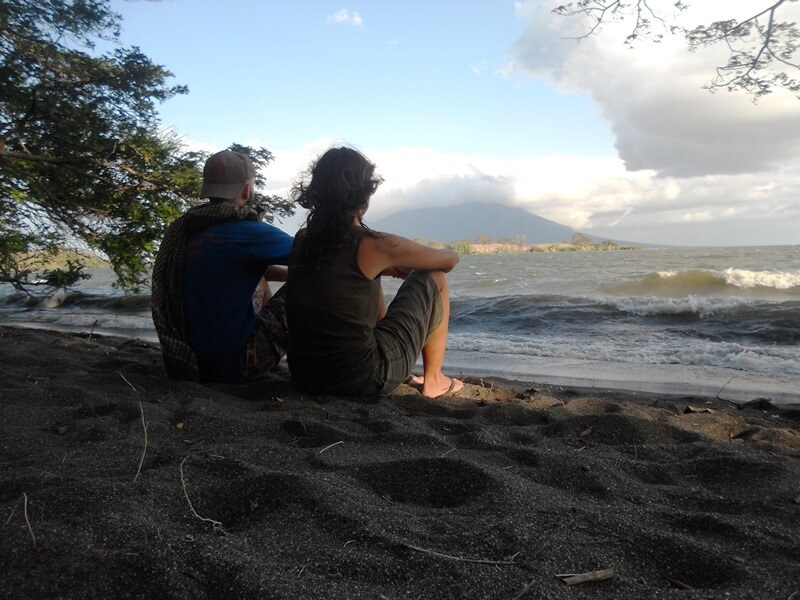
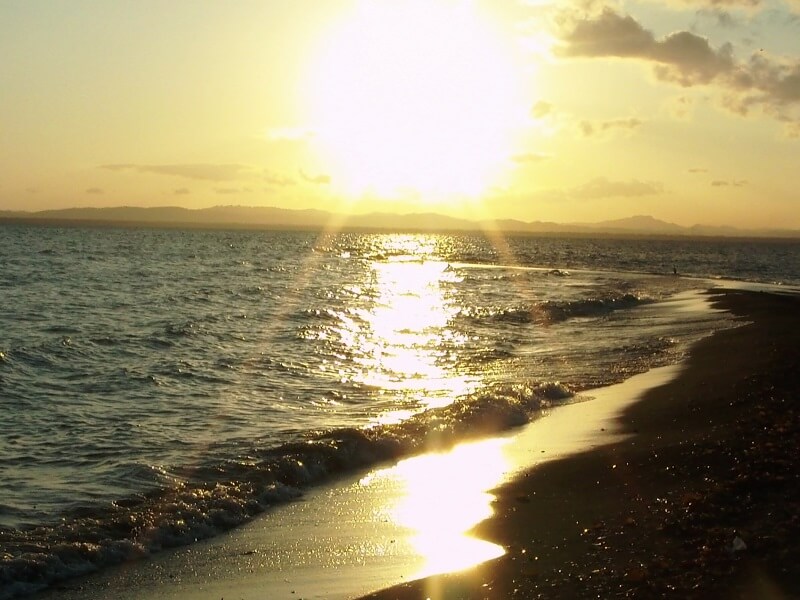
Punta Jesus Maria. The meeting of two small bays. The Conception volcano observes us severely from above, the red waters for the sun seem to dance, a small tongue of black volcanic sand leans shyly towards the distant opposite shore ... a lone heron seems to admire the sun that greets us slowly ...
We, ecstatic, take so many photos and videos that, almost by magic, both batteries advise us to enjoy that show with the heart and eyes, impressing those images in our soul instead of on a film ...
At 6.50 we get on the bus that leads us to the slopes of the Concepcion Volcano.
After an hour and a half walk, the real climb begins.
From 100 to 400 meters there are no big problems, Nain, our guide, often stops to show us the flora and fauna of this beautiful island, legends, anecdotes and many funny stories.
The butterflies follow our path, yellow, white, red and black ... beautiful.
Then sweat, fatigue, heat, pain in the legs ... small stops to catch your breath ... we see various types of monkeys, colorful birds, strange insects, old trees up to our destination: the Mirador. The view is breathtaking, the strong wind almost moves you. Before us the lake, the whole coast in its splendor; behind us the solidified lava of the imperious Concepcion volcano.
We leave the island for Costa Rica.
A ferry, a taxi and various buses take us to the border. Never seen such a long tail.
After the usual paperwork (it takes almost two hours!), We take a bus first to Liberia and then to our final destination: Playa Tamarindo!
When we cross the border we find that the whole landscape changes, if so far, passing from one country to another we had not noticed big differences, this time instead ... people no longer jump on the buses still running but form the orderly rows, you can see boys well dressed and often with surfboards under your arm and everything has exorbitant costs ...
We wake up and go directly to the beach to dive into the ocean ... basically we just have to cross the road ...
At sunset, we leave for Playa Jesus, 15 km from here, to try to see the large green turtles of the Pacific laying their eggs ...
The search begins ... hopefully well! We try first on a beach but in vain ... we follow our guides through a path that leads us to another beach of films ... the sky is a bit cloudy but the full moon manages to illuminate everything!
The wait is long, Nature has its time. Suddenly, in the distance, we see a large black spot on the shoreline, it looks like a small rock, but ... looking better ... that black spot just emerged from the waters of the Pacific moves ... goes to the top of the beach, then stops, changes its mind, yes turns to dive back into the black sea of the night.
In several hours we will see half a dozen of them and each time the emotion is great ... the emotion of following these large prehistoric amphibians in silence, without lights, behind them, trying not to disturb their slow movement ...
After a few days at sea it's time to dive into the heart of nature in this beautiful country. We take four buses to get to La Fortuna!
The landscape changes completely along our way.
Surfers from Billabong or Quicksilver move away to make room for large green hills and Milka cows that look like Swiss alpine landscapes.
Our hostel is delightful. There is a huge kitchen, a nice sitting room with a large adjacent garden. We plan to stay here at least three nights. Not far from here there is a waterfall, an excellent opportunity for a dip with the liana in the pool of icy water.
Morning by the sea, evening on the slopes of the Arenal Volcano.
In the afternoon we leave for a hike.
We immerse ourselves completely in a rainforest that swallows you inexorably ... it doesn't matter if the sun is shining outside, it's dark inside.
We enter another world, a thousand different shades of green and populated by many animals. We see a sloth that dozes on top of a tree, rarely and only for a short time, the cougars and jaguars are always lurking.
Colorful birds in bright colors fly joyfully and convey a great sense of freedom.
We swing on a liana like Tarzan, we climb steep slopes following Guillermo, our guide, one of the survivors of the fateful eruption of 1968 ... then it was thought that "Arenal" was only a mountain ... life flowed quietly among the greens pastures ... the first signs were given by the cows that suddenly stopped drinking in the river ... the water was boiling ... but the poor and ignorant peasants could not imagine what was about to happen ... a beautiful day in March, the story of La Fortuna will mark a important date: the sky darkens, the earth begins to tremble and in a few minutes for many there is nothing more to do ... toxic gases descend to the valley at a speed of 100 km per hour killing everything they encounter ... then incandescent rocks , like fiery rain, they finish the work. An entire village is razed.
Arenal was not a mountain ... Arenal is a volcano.
We continue our journey up to a bed of petrified lava.
It is starting to get dark and we still have a long way to go.
Suddenly our guide stops. He looks terrified. It takes us away from the area. There is a very dangerous snake ready to attack, evidently disturbed by our presence. We put ourselves at a safe distance and observe it with admiration. It went well. In two hours we would die of a bite.
We go on, this time with more caution, while the forest sinks into absolute darkness and not even the shining full moon can illuminate our path. The creatures of the night begin to emerge from their nests, burrows, holes ...
But it's time to relax! We stop in a hot spring, a stream of hot thermal water ... soak for an hour, as in a large whirlpool tub we enjoy the moment thinking about the great adventure we have just experienced ...
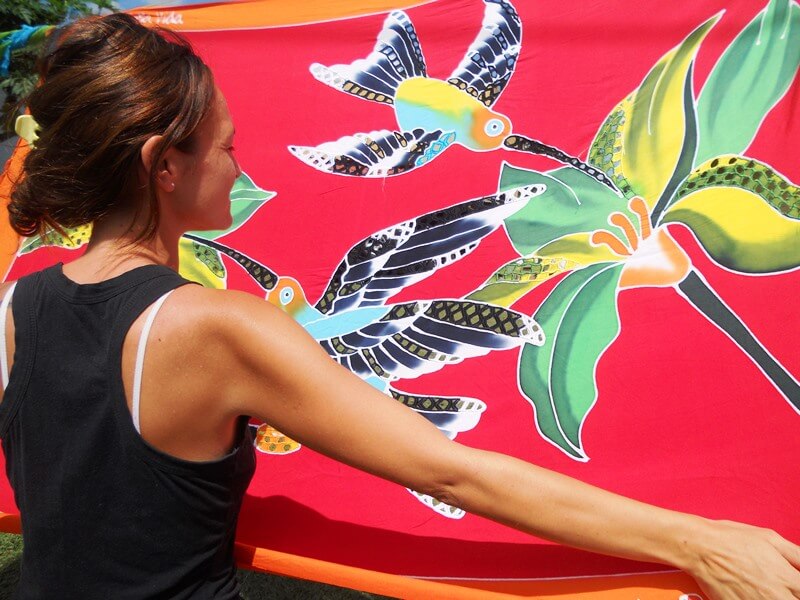
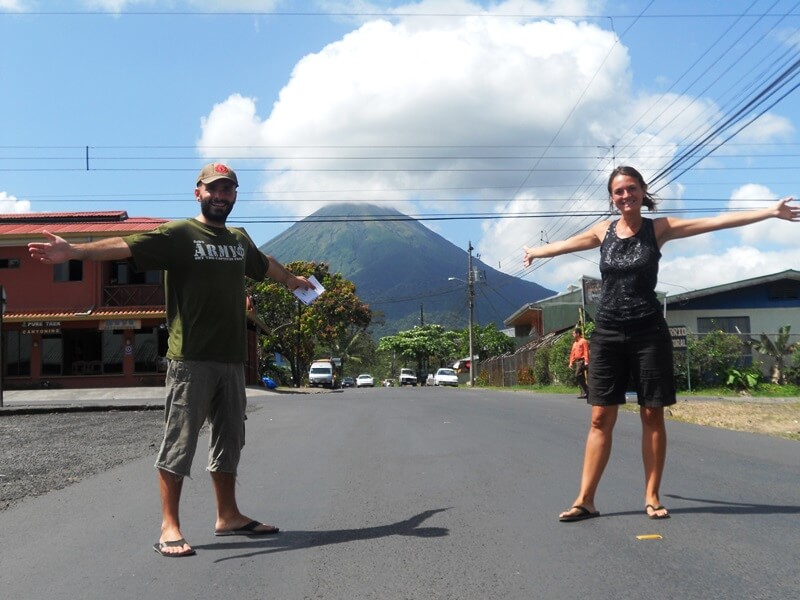
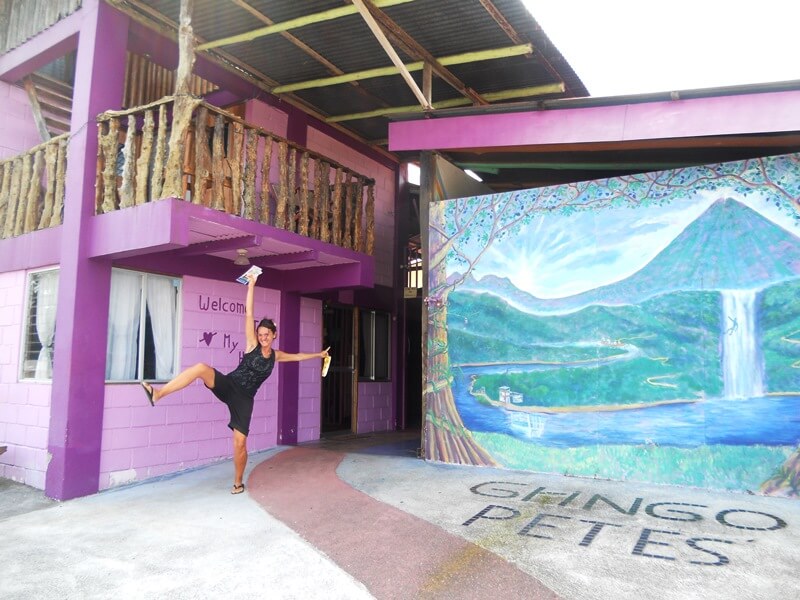
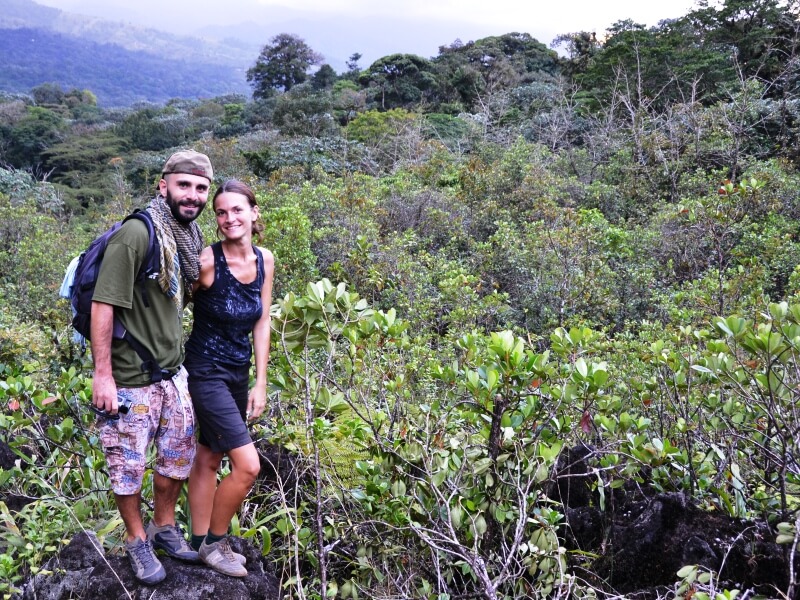
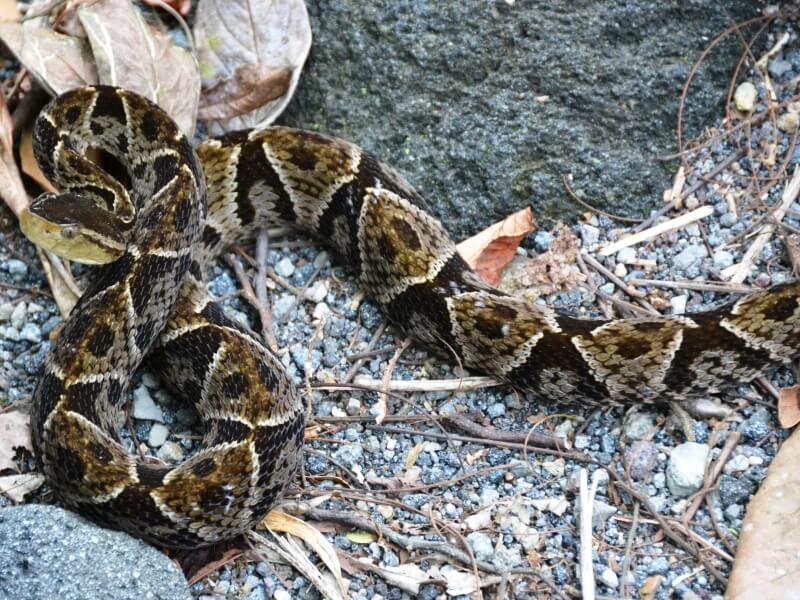
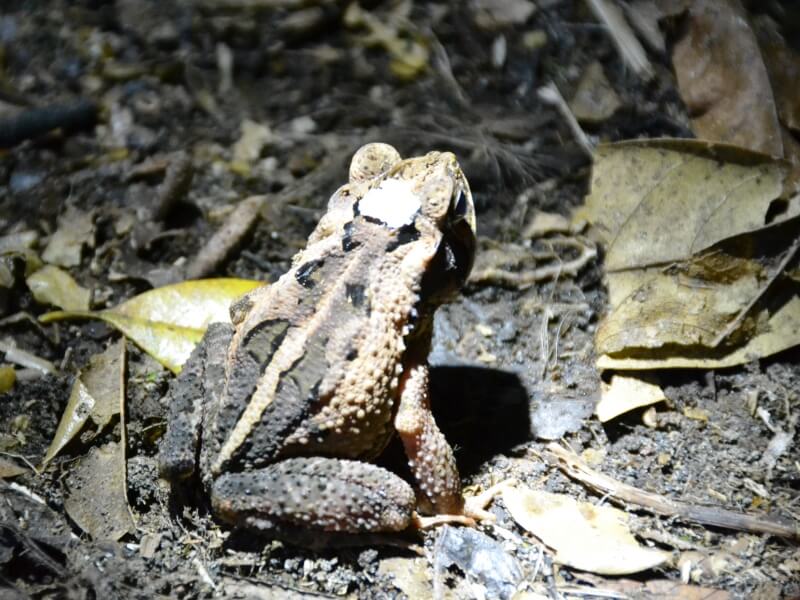
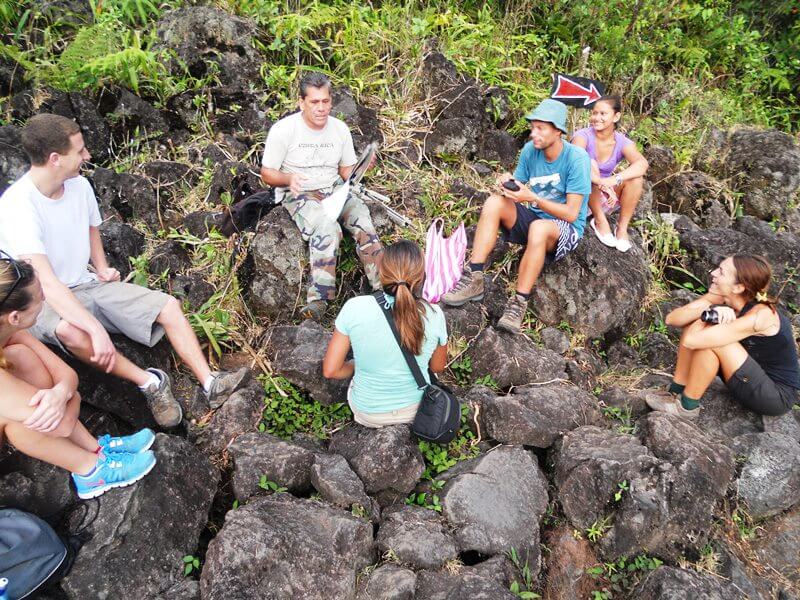
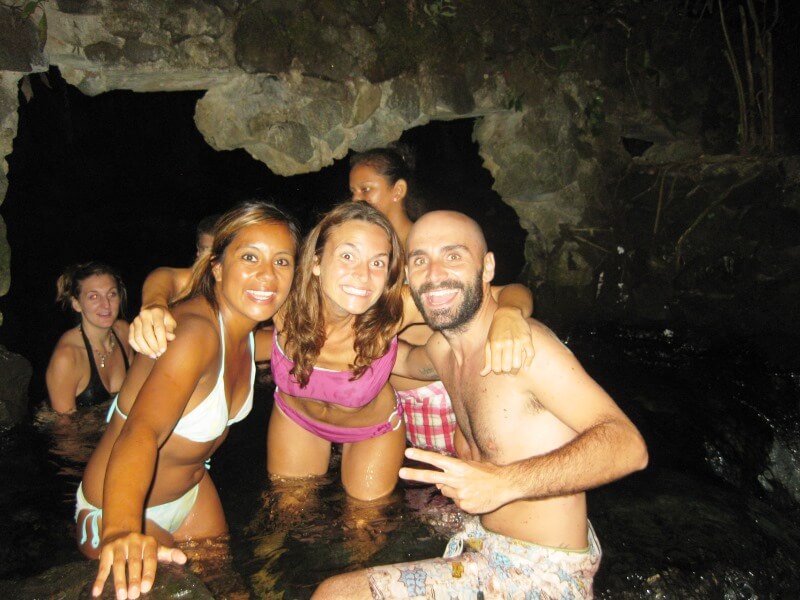
Early in the morning we find ourselves riding on docile horses to immerse ourselves again in this dense nature. What a feeling of freedom to trot among those mountainous paths ... we stop to go down 700 meters to admire a majestic waterfall and then start galloping between green meadows and blue canals ... we are enchanted by two toucans who make a brief appearance and we conclude this unforgettable adventure in a reserve of large colored butterflies and microscopic red frogs the size of a nail!
As usual, to reach a destination, even if not very far away, we have to travel all day changing numerous buses, but now we are used to it and it's almost fun!
And so, starting at 5.30 in the morning from La Fortuna we find ourselves first in San Ramon, then Punta Arenas, then Quepos, finally at destination!
Twelve hours of travel but we're back to the sea!
Manuel Antonio National Park. At the entrance they provide us with a map that we will follow in detail so as not to miss a square meter of this paradise of Nature. We go through the gate, we immediately see the big blue butterflies, we arrive at the beach, wonderful, it was worth it to wake up early because we can enjoy it without the horde of tourists who will soon arrive rowdy.
We follow the paths along which we meet many monkeys, lizards, agouti ...
Two gentlemen observe the top of a tree with large binoculars. They invite us to take a look. I am petrified with amazement. On us there is a sloth mother with her baby that moves tenderly.
Further on we find a huge spider web with its architect intent on eating a large insect just caught.
After a few steps we begin to listen to a dull, repeated noise: here is a red-headed black woodpecker. We walk in the forest, different sounds blend together, the sound of our footsteps on the leaves, the scream of monkeys, the crawling of reptiles, the singing of birds ...
And after walking for several kilometers we stop to dive into a transparent green sea, while we swim we see the monkeys playing on the trees throwing fruit just stolen from the bags of tourists on the beach.
A little further on, a band of washing bears patrols the area in search of food ...
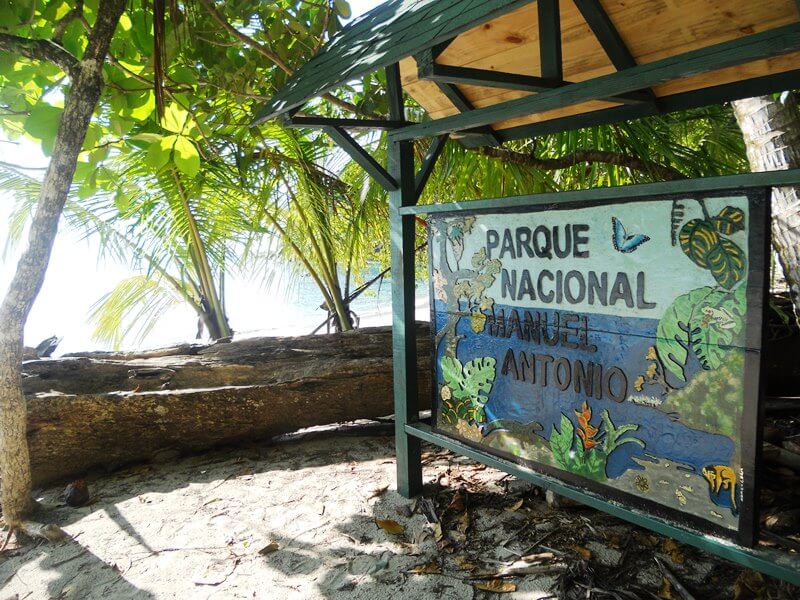
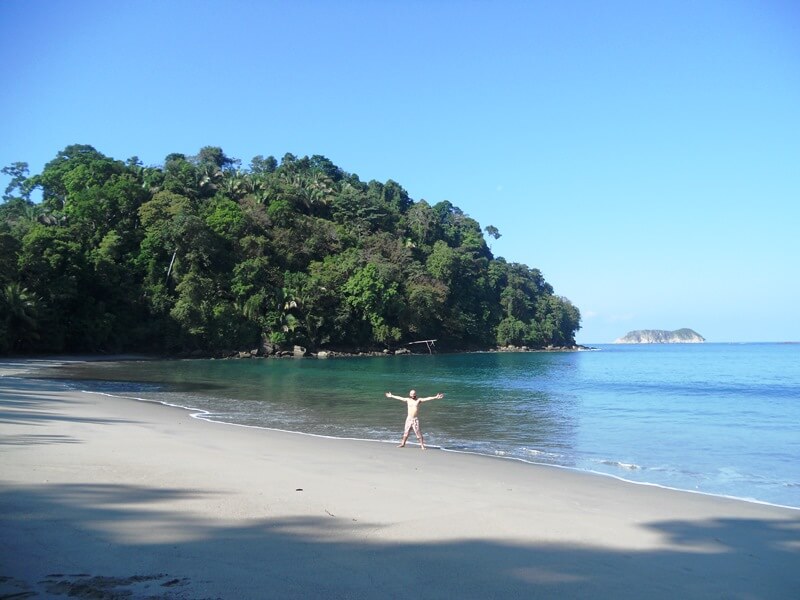
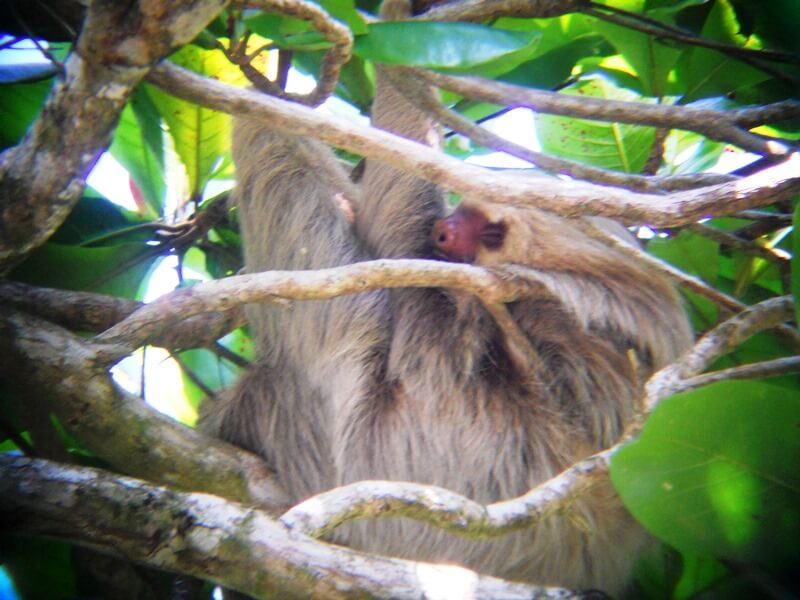
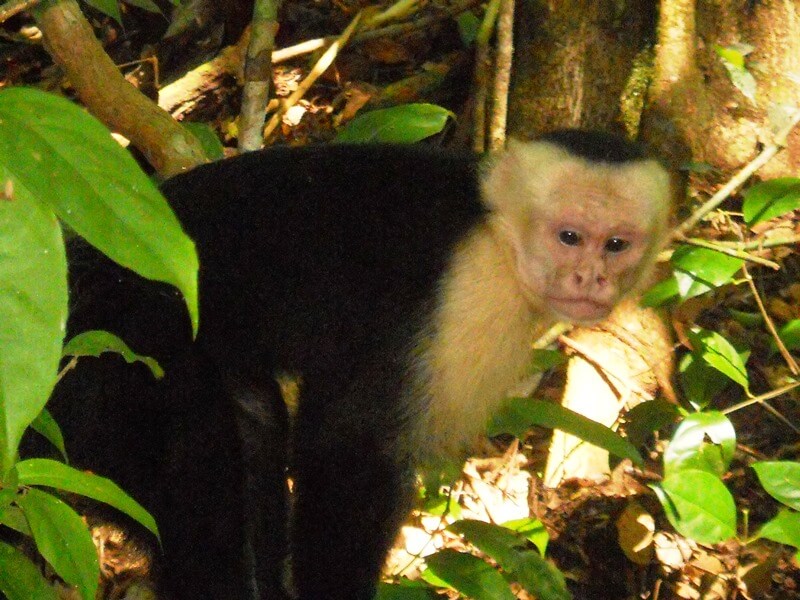
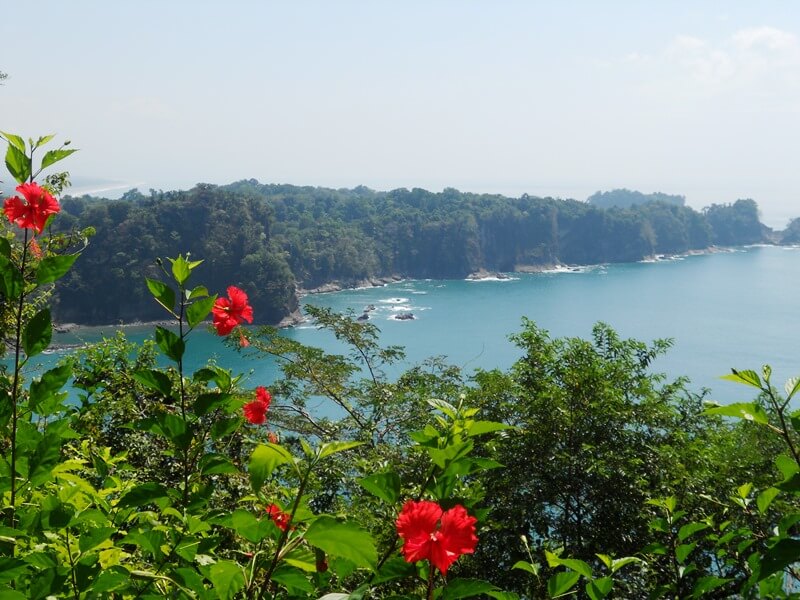
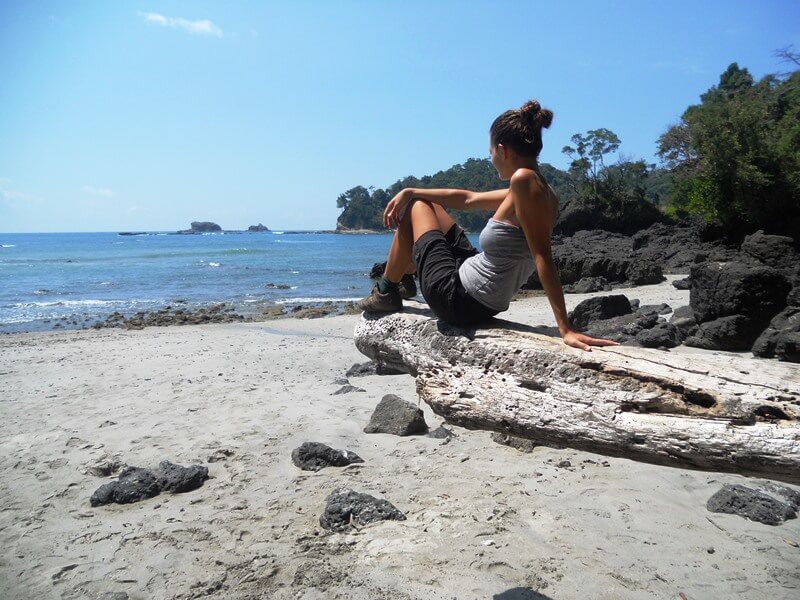
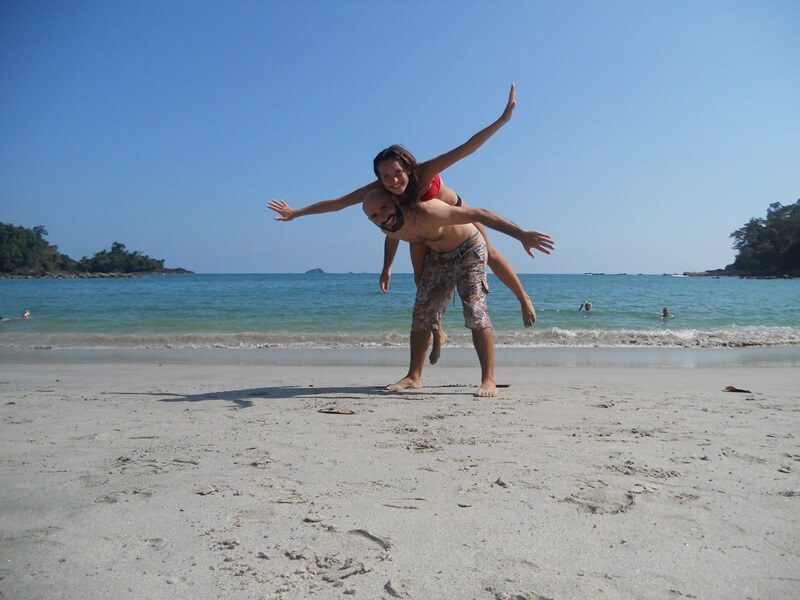

It is Sunday afternoon here in Costa Rica and all citizens of the capital return to San Josè after a nice weekend at the beach. Between curves and traffic we suffer a little but in the end we reach the capital and shortly after we find ourselves at "Dona Lela" eating an excellent "casado" with our couchsurfing friend: Carlos!
Here it is fresh, San Josè rises at the foot of the volcano "Irazù".
Toucan Rescue Ranch. This rehabilitation center is managed with great passion and devotion for animals. We admire toucans, colorful parrots, sloths, hedgehogs, monkeys, owls, a tiger cat ...
Each has its own story. There are those who have been injured by another animal, those hit by a car, those mistreated, many come here dying ... volunteers work hard to treat them, pamper them, feed them and bring them back to life.
We spend an unforgettable morning!













Barrio Amon, an architecturally and artistically very interesting neighborhood. Delicious lunch at the "Cafè Mundo" and we leave for the Orosi Valley.
We pass through the old capital: Cartago with its short-legged inhabitants! 😉 and then dive back into the splendid and luxuriant Costa Rican nature between valleys, streams and an enchanting lake. The air was fresh, the hot sun made the magnificent green of the meadows shine even more, the colors of the flowers exploded in the middle ...
There is no better way to greet this beautiful area of the world that has welcomed us for almost two months.
Error: No feed found.
Please go to the Instagram Feed settings page to create a feed.